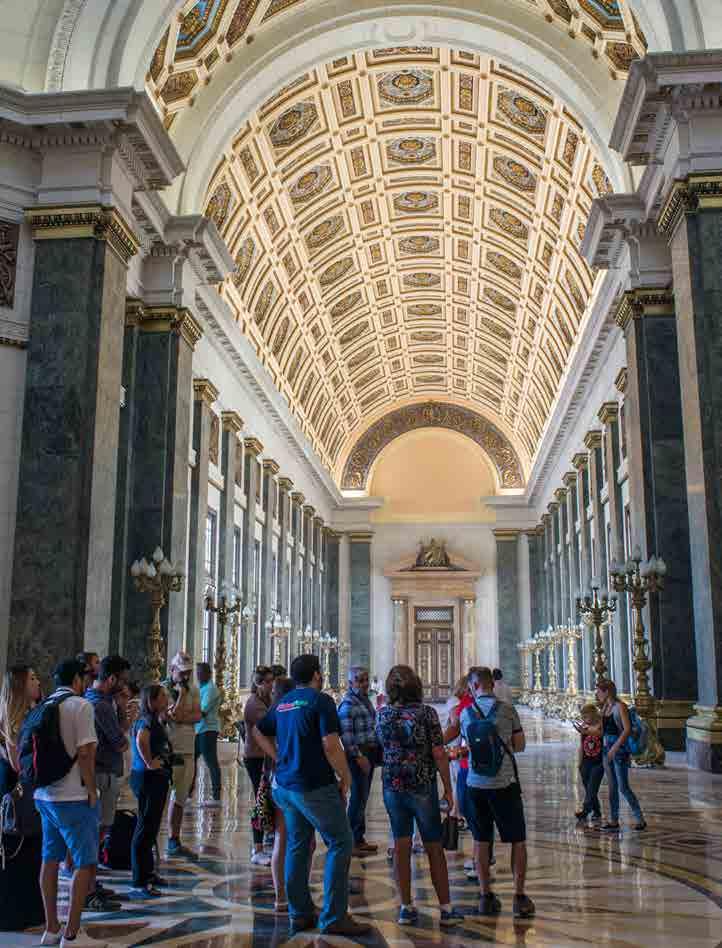

LA HABANA, 1-5 MAYO 2023
in culture and heritage
y pAtrimonio MAYO 2023 MAY
del
EDICIÓNESPECIAL
CUBA Unique
ÚniCA en CUltUrA
Guía
Ocio y la Cultura en Cuba
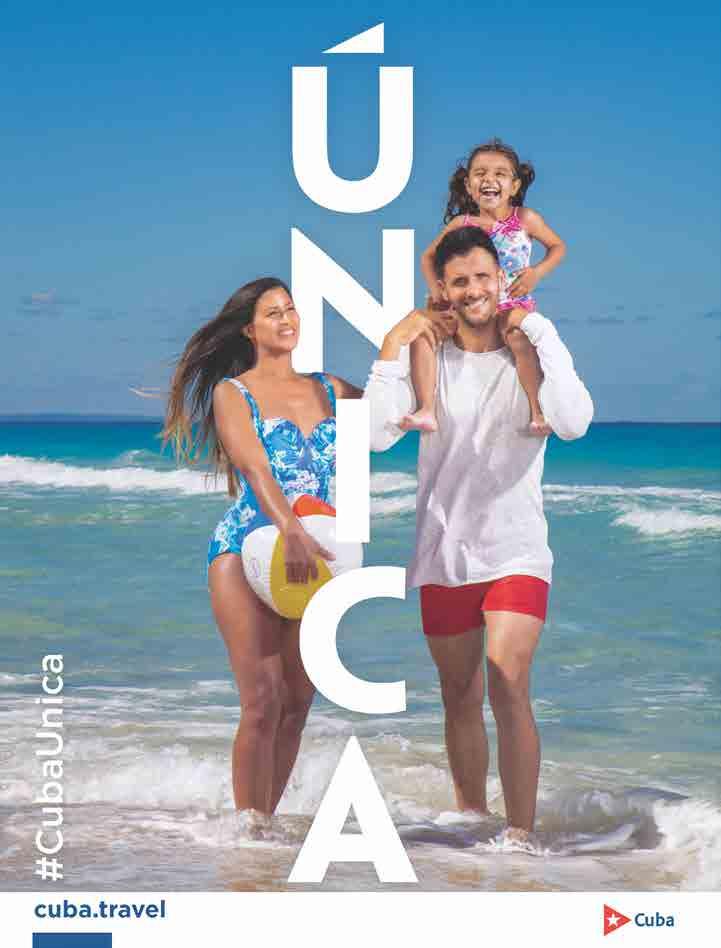

Publicación mensual de distribución gratuita.
DIRECCIÓN
Maria del Carmen Madariaga
JEFE DE REDACCIÓN
Aitana Martínez
CORRECCIÓN
María de los Ángeles Santana
COLABORADORES
Amalia Marín
Aitor Falcón
Arianna Gutiérrez
María Elena Sanz
Taymí Medina
Elizabeth Álvarez
FOTOGRAFÍA

Ariel Cecilio Lemus
DISEÑO GRÁFICO
Dennis Pérez
RESPONSABLE DE MARKETING Y PUBLICIDAD
Marilar Ruíz
EDITORIAL
INTELLIGENT SOLUTIONS
CONSULTING S.L.
Depósito Legal
B-40261/99
ISSN 1575-9962
CORRESPONSALÍA EN CUBA corresponsaliacuba@ bienvenidoscuba.es

Visite nuestro sitio web: www.bienvenidoscuba.es
reportaje
summarySUMARIO EDITORIAL CUBA. INFORMACIÓN GENERAL CUBA, GENERAL INFORMATION
6
4 5 Cuba «Úni
Ca en C ultura
y patrimonio» UniqUe in cUltUre and heritage
looking to tHe future WealtH management in Cuba

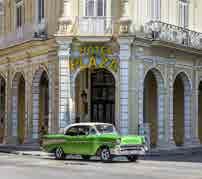

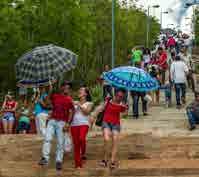
el día del son Cubano y la trasCendenCia de un Género
tHe day of tHe Cuban son and tHe transCendenCe of a genre
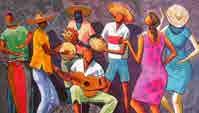
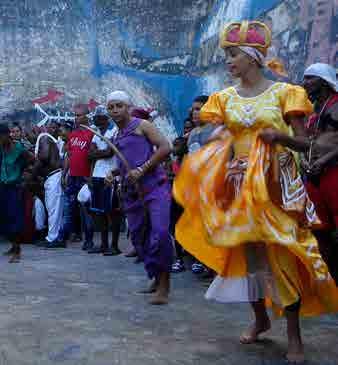
68
y la
Gran teatro de la Habana «aliCia alonso»
Creation, Culture and youtHs

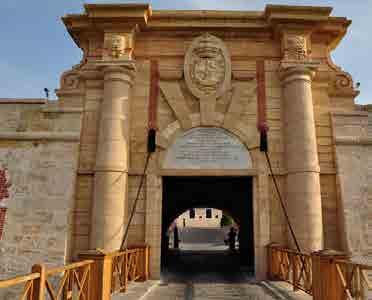
DIRECTORIO DIRECTORY 76 INFORMACIÓN AL TURIsTA TOURIsTs vIsITING CUBA EssENTIALs 74 14 rePOrtaJe 32 recOrriendO el caiMÁn 54 calidOscOPiO «FortiFiCaCiones Coloniales en la Habana» Colonial fortresses in Havana 24 rePOrtaJe 60 gUía del OciO y la cUltUra remedios y sus Coloridas parrandas remedios and its Colorful Parrandas 62 gUía del OciO y la cUltUra la Habana «Cuba y la riqueza de su patrimonio vivo» Cuba and tHe riCHness of its living Heritage 44 calidOscOPiO
Gestión patrimonial
Cuba»
«la
en
gUía del OciO
arCHiteCture, History and Cultural life cUltUra
rOMerías de MayO «CreaCión, Cultura y juventudes»
Bienvenidos a Cuba y a este mayo que propone descubrir la riqueza cultural y patrimonial de la isla caribeña. Celebremos, con esta edición, la cultura, tradiciones, el buen arte y la historia que distinguen a la Mayor de las Antillas.
La Habana que siempre encanta, con su Centro Histórico Urbano declarado Patrimonio Cultural de la Humanidad, se incluye en esta entrega. Un homenaje a la Ciudad Maravilla que del 1 al 5 de mayo es sede de la Feria Internacional de Turismo, FITCuba 2023. Recorramos entonces La Habana Vieja y sus icónicos sitios que le otorgan esa magia tan especial; el Gran Teatro de La Habana «Alicia Alonso», uno de los mayores símbolos culturales de la capital, escenario de emblemáticas presentaciones y asombroso en su arquitectura; y sus fortificaciones coloniales.
Proponemos además, un viaje a ese riquísimo acervo nacional, único y a la vez diverso, en el que destacan la Tumba Francesa, la rumba, el punto cubano, las Parrandas de la región central de Cuba y los saberes de los maestros del ron ligero, inscritos en la lista representativa del Patrimonio Cultural Inmaterial de la Humanidad.
La música llega en este número a ritmo de son cubano, para celebrar el día de un género legendario que emana identidad y abraza con la distintiva musicalidad de esta nación del Caribe. Las Romerías de Mayo se suman como ese gran jolgorio de creación que cada año, convierte a la urbe holguinera en epicentro del buen arte joven de la Isla. Y si de festejos se trata, las Parrandas de Remedios despuntan como ese universo de luces, colorido, arte y tradición.
Sin dudas, una edición que fascina ante el placer descubrir la diversidad, riqueza y autenticidad de esta Cuba Única en cultura y patrimonio.
Welcome to Cuba and to this May that proposes to discover the cultural and patrimonial richness of the Caribbean island. Let's celebrate, with this edition, the culture, traditions, art and history that distinguish the largest of the Antilles.
Havana, which always enchants, with its Historic Urban Center declared a World Heritage Site, is included in this issue. A tribute to the Wonder City, which from May 1 to 5 will host the International Tourism Fair, FITCuba 2023. Let's tour Old Havana and its iconic sites that give it that special magic; the Gran Teatro de La Habana "Alicia Alonso", one of the capital's major cultural symbols, stage of emblematic presentations and amazing in its architecture; as well as its colonial fortifications.
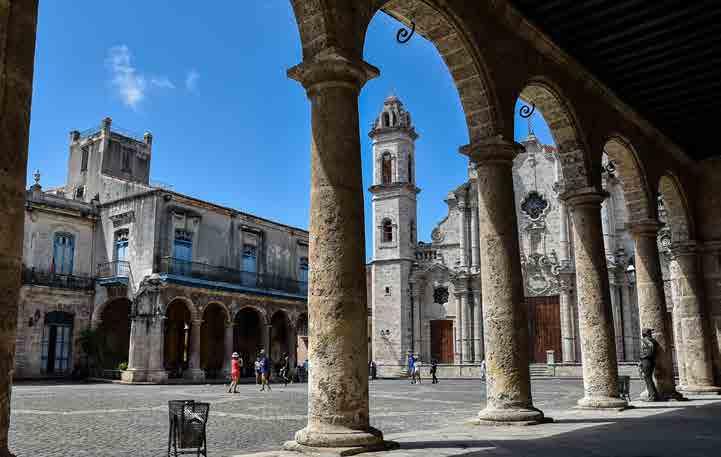
We also propose a trip to that very rich national heritage, unique and at the same time diverse, in which the Tumba Francesa, the rumba, the punto cubano, the Parrandas of the central region of Cuba and the knowledge of the masters of light rum, inscribed in the representative list of the Intangible Cultural Heritage of Humanity, stand out. Music arrives in this issue to the rhythm of Cuban son, to celebrate the day of a legendary genre that emanates identity and embraces the distinctive musicality of this Caribbean nation. The Romerías de Mayo are added as that great revelry of creation that every year turns the city of Holguin into the epicenter of the good young art of the island. And if we are talking about celebrations, the Parrandas de Remedios stand out as that universe of lights, color, art and tradition.
Undoubtedly, an edition that fascinates with the pleasure of discovering the diversity, richness and authenticity of this unique Cuba in culture and heritage.

editorial MAYO 2023 M ay
Cuba
INFORMACIÓN GENERAL
Geografía: Ubicada a la entrada del golfo de México, el archipiélago cubano está formado por la isla de Cuba, la Isla de la Juventud y aproximadamente 4,195 cayos e islotes. Cerca de 140 km la separan las Bahamas; 77 km Haití; 180 km de Florida; 210 km Cancún y 146 km de Jamaica.
La silueta de Cuba, alargada y estrecha, alcanza los 120 km de longitud y entre 32 y 145 km de ancho. En total el territorio abarca 110.922 km, lo que la distingue como la mayor de las Antillas y por su ubicación geográfica la llaman también la llave del Golfo.
Temperatura promedio anual: 25º Celsius (77 º Fahrenheit).
Geography: Located in the Caribbean Sea, the Cuban archipelago includes the Island of Cuba, the Island of Youth – Isla de la Juventud – and approximately some 4,195 keys and islets. Its nearest neighbors are: the Bahamas, 140 Km (to the north), Haiti; 77 Km (to the east); Florida, US, 180 Km (to the north); Cancun, Mexico, 210 Km (to the west) and Jamaica, 146 Km (to the southeast). Cuba’s elongated shape – 120 Km long and 32-145 Km wide -, encompasses a 110,922 Km territory, the largest of the Antilles and also known as the ”Key to the Gulf” due to its location at the entrance of the Gulf of Mexico.
Mean annual temperature: 25 degrees Celsius (77 degrees Fahrenheit)
Nombre Oficial | Official Name
República de Cuba
Republic of Cuba
Capital | Official Name
La Habana
(3 millones de habitantes
3 million inhabitants)
Población | Population
11,1 millones (70% urbana)
11,1 million (70% urban)
Idioma oficial | Official language
Español Spanish Área | Area
110.922 km²
Provinces: The Republic of Cuba has 15 provinces: Pinar del Río, Artemisa, La Habana, Mayabeque, Matanzas, Cienfuegos, Villa Clara, Sancti Spíritus, Ciego de Ávila, Camagüey, Las Tunas, Holguín, Granma, Santiago de Cuba and Guantánamo; it also has a Special Municipality: Isla de la Juventud.


Main exports: Sugar (raw and refined), nickel oxide, fish and seafood, rums, alcohols and citrus fruits.
Literacy: 95%.
Inhabitants per doctor: 183.
Life Expectancy: 77 years.
División político-administrativa: La República de Cuba está dividida en 15 provincias y un Municipio Especial, la Isla de la Juventud. Las provincias son Pinar del Río, Artemisa, La Habana, Mayabeque, Matanzas, Cienfuegos, Villa Clara, Sancti Spíritus, Ciego de Ávila, Camagüey, Las Tunas, Holguín, Granma, Santiago de Cuba y Guantánamo.
Productos de exportación: Azúcar crudo y refino, óxido de níquel, pescado y mariscos, tabaco, rones y alcoholes, cítricos.
Tasa de Alfabetización: 95%.
Habitantes por médico: 183.
Esperanza de vida: 77 años.
Red de carreteras: 46.000 km
Aeropuertos internacionales: 11
Forma de Gobierno: Parlamentario.
Moneda: El peso cubano es la moneda nacional (CUP). El peso cubano tiene 100 centavos. Circula billetes de 1, 3, 5, 10, 20, 50, 100, 200, 500, 1000 pesos y monedas por valor de 1,3 y 5
pesos. Existen monedas de 1, 2, 5 y 20 centavos. El euro circula en algunos polos turísticos como Varadero, Holguín y Jardines de Rey.
Días festivos:
1 de Enero Día de la Liberación
Highways’ network: 46.000 km International airports: 11 Government: Parliamentary.
Currency: the Cuban peso (CUP) is the national currency. The Cuban peso equals 100 Cuban cents and comes in the following bill denominations of 1, 3, 5, 10, 20, 100, 200, 500 and 1000; also in 1, 3 and 5 pesos’ coins and 1, 2, 5 and 20 cents. Euro is accepted in some destinations as Varadero, Holguin and Jardines del Rey.
Holidays:
January 1st – Liberation Day
May 1st, Workers’ Day
July 25, 26 and 27, Anniversary of the Moncada Fortress assault in 1956.
October 10, Anniversary of the beginning of the War of Independence
December 25, Christmas Day
December 31, New Year´s Eve
Bandera | Flag
Mayabeque Matanzas Cienfuegos
Villa Clara Sancti Spíritus
CiegoÁvilade Camagüey
Las Tunas
Granma Santiago de Cuba Guantánamo
Holguín
la
25
Diciembre, Día de Navidad 31 de Diciembre
1 Mayo, Día del Trabajo 25, 26 y 27 de Julio, Aniversario del Asalto al Cuartel Moncada 10 de Octubre, Aniversario del Inicio de
Guerra de Independencia
de
Pinar del Río
Isla de la Juventud
Artemisa
La Habana
Guía del Ocio y la Cultura en Cuba 5
what you should know about the island

6
Cuba úniCa en Cultura y patrimonio »
La riqueza cultural y patrimonial que distingue a Cuba, la convierten en un destino único que fascina ante su esencia auténtica, histórica y diversa. La mezcla de influencias españolas, africanas y caribeñas, así como la transculturación de variadas expresiones culturales conformaron la identidad cubana, que se refleja en tradiciones milenarias, en su emblemática arquitectura, en las manifestaciones artísticas y las peculiaridades de su gente.
Unique in culture and heritage
The cultural and patrimonial richness that distinguishes Cuba, makes it a unique destination that fascinates with its authentic, historic and diverse essence. The mixture of Spanish, African and Caribbean influences, as well as the transculturation of various cultural expressions have shaped the Cuban identity, which is reflected in ancient traditions, its emblematic architecture, artistic manifestations and the peculiarities of its people.

reportaje
«
7
Textos y fotos /Texts and photos: Bienvenidos
Son innumerables los atractivos que le confieren a la nación antillana, esa magia que tanto atrae y cautiva a los visitantes. La Habana, Ciudad Maravilla, con su Centro Histórico Urbano, declarado Patrimonio Cultural de la Humanidad, evoca siglos pasados y sorprende con la excelencia de su conservación. Recorrerlo emociona ante el hallazgo de un acervo cultural expresado en musicalidad, colorido, algarabía, impresionantes fortificaciones coloniales y un pueblo que, con gran jovialidad, da la bienvenida. La belleza de centros históricos de ciudades como Trinidad, Cienfuegos y Camagüey, que ostentan la categoría Patrimonio de la Humanidad reconocida por la UNESCO, figuran entre los encantos de la Mayor de las Antillas. Desde sus características distintivas, estos míticos enclaves enamoran con sus calles, plazas, edificaciones y monumentos admirables y muy bien conservados. A través de la magnificencia de su estructura, cuentan historias y relatan las influencias que convergen en su origen y construcción.

reportaje
8
There are uncountable attractions that give the Antillean nation that magic that attracts and captivates visitors. Havana, the Wonder City, with its Historic Urban Center, declared World Cultural Heritage, evokes past centuries and surprises with the excellence of its preservation. Touring it,enchants visitors with the discovery of a cultural heritage expressed in musicality, colorfulness, joy, impressive colonial fortifications and a people that, with great joviality, welcomes visitors.
The beauty of the historic centers of cities like Trinidad, Cienfuegos and Camagüey, which are UNESCO World Heritage Sites, are among the charms of the Greater Antilles. With their distinctive features, these mythical enclaves charm visitors with their streets, squares, buildings and the admirable and well-preserved monuments. Through the magnificence of their structure, they tell stories and relate the influences that converge in their origin and construction.


Cuba «Única en
y patrimonio»
cultura
en
9
Guía
del Ocio y la Cultura
Cuba
Urbes legendarias como la capital cubana, la villa trinitaria y Santiago de Cuba integran la red de Ciudades Creativas en el país. Visitarlas implica el encuentro con el arte prolífico, raigal, diverso y hereditario que se nutre y vibra en cubanía.

Asimismo, valiosas expresiones musicales, danzarias y tradicionales forman parte de ese capital intangible que identifica y enaltece al país. La Tumba Francesa con el baile, canto y percusión que la integran; la rumba cubana, esa mezcla festiva de baile y música junto a las prácticas culturales inherentes; El Punto, expresión poética y musical guajira; las Parrandas de la región central en sus sonoridades, bailes, colorido y composición; y los Saberes de los maestros del ron ligero, que se han transmitido ininterrumpidamente garantizando la salvaguardia del proceso de fabricación del ron ligero cubano. Estos bienes forman parte del Patrimonio Cultural Inmaterial de la Humanidad.

reportaje
Bienvenidos MAYO 2023 MAY 10
Legendary cities such as the Cuban capital, the trinitarian Villa and Santiago de Cuba are part of the network of Creative Cities in the country. Visiting them implies an encounter with the prolific, deep-rooted, diverse and hereditary art that is nurtured and vibrates in Cuba.

Likewise, valuable musical, dance and traditional expressions are part of that intangible capital that identifies and exalts the country. The TumbaFrancesa with its dance, song and percussion; the Cuban rumba, that festive mixture of dance and music with the inherent cultural practices; El Puntocubano, a poetic and musical expression of the campesinos; the Parrandas of the central region in their sonorities, dances, color and composition; and the Knowledge of the light rum masters, which have been uninterruptedly transmitted,ensuring the safeguarding of the Cuban light rum manufacturing process. These assets are part of the Intangible Cultural Heritage of Humanity.

Cuba «Única en cultura y patrimonio»
11
Guía del Ocio y la Cultura en Cuba
La isla caribeña es también su idiosincrasia mestiza y diversa, sus tradiciones ancestrales. Es la oralidad y el arte distintivo en todas sus manifestaciones, la simbología, la historia estremecedora, la belleza y peculiaridades de su arquitectura. Es la excelencia de productos identitarios como el ron, el café y los habanos, el legado, las costumbres y festividades, los ritmos y sabores. Es la calidez y sonrisa de su gente, carismática y hospitalaria. Cuba es la riqueza y autenticidad que aguardan sus destinos y el inevitable deseo de descubrir una nación única en patrimonio y cultura.

reportaje
Bienvenidos MAYO 2023 MAY 12
The Caribbean island is also its mestizo and diverse idiosyncrasy, its ancestral traditions. It is the orality and the distinctive art in all its manifestations, the symbology, the impressive history, the beauty and peculiarities of its architecture. It is the excellence of identity products such as rum, coffee and cigars, the legacyand festivities, the rhythms and flavors. Furthermore, it is the warmth and smile of its charismatic and hospitable people. Cuba is the richness and authenticity that awaits in its destinations and the inevitable desire to discover a nation unique in heritage and culture.


Cuba «Única en cultura y patrimonio»
13
Guía del Ocio y la Cultura en Cuba

14
FortiFiCaCiones Coloniales en la Habana
Bordeada de mar, La Habana se muestra serena. El rompiente de las mareas; el ir y venir de sus habitantes y sus antiguas fortalezas, la enriquecen y definen, como la urbe cosmopolita que es. La capital cubana recibe al visitante ávido por develar sus más furtivos secretos y desde su Centro Histórico, cual excelente anfitriona, revela detalles desde su fundación como Villa de San Cristóbal de La Habana.

Colonial fortresses in Havana
Bordered by the sea, Havana looks calm. The breaking of the tides, the comings and goings of its inhabitants and its ancient fortresses enrich and define it as the cosmopolitan city it is. Havana welcomes the visitor who is eager to unveil its most hidden secrets and from its Historic Center, as an excellent hostess, reveals details since its foundation as Villa de San Cristóbal de La Habana.
Textos/Texts: Bienvenidos
Fotos/Photos: Bienvenidos-Publicitur S.A.
calidoscopio
15

reportaje Bienvenidos MAYO 2023 MAY 16
Asentada definitivamente, en 1519, junto a la bahía, ser puerto de tránsito y provisión para la flota española, contribuyó a su asedio por parte de piratas y filibusteros. Fue entonces, que se levantaron castillos, puentes, baluartes, plataformas, fosos y murallas, para intentar contener los ataques. Esas extraordinarias construcciones cuentan hoy la historia apasionante de la ciudad.
Para llegar a conocerlas, cada día su Centro Histórico Urbano y su sistema de fortificaciones -Patrimonio Cultural de la Humanidad- se llena de cubanos y turistas. Y es que estas fortalezas, además de estimular la imaginación, trazan un estupendo recorrido a través del legado arquitectónico y cultural de los pasados siglos XVI, XVII y XVIII.

Settled definitively in 1519 next to the bay, being a port of transit and supply for the Spanish fleet was a fact that contributed to its siege by pirates and freebooters. It was then that castles, bridges, bastions, platforms, trenches and walls were built to try to halt the attacks. Today, these extraordinary constructions tell the exciting history of the city.
To get to know them, every day its Historic Urban Center and its system of fortressesCultural Heritage of Humanity- is full of Cubans and tourists. The fact is that these fortresses, in addition to stimulating the imagination, trace a wonderful journey through the architectural and cultural legacy of the past 16th, 17th, and 18th centuries.
Fortificaciones coloniales en La Habana
17
Guía del Ocio y la Cultura en Cuba
Castillos defensivos
El Castillo de la Real Fuerza fue la primera fortaleza amurallada que se levantó en América. Convertida en museo, protege y exhibe varias colecciones de piezas, junto a imágenes y réplicas de embarcaciones de la época
colonial. En ella, todo es atractivo: sus paredes, su foso, su puente de madera, sus baluartes, sus bóvedas y cañones, su historia y hasta sus leyendas. Una de ellas relacionada con el amor, dio como resultado uno de los símbolos de La Habana: La Giraldilla. Y allí, en la torre campanario, inmortalizada en bronce, la enamorada vigila la bahía. A la Real Fuerza le siguieron el Castillo de San Salvador de la Punta y el de los Tres Reyes Magos del Morro, cuyas construcciones se iniciaron a final del siglo XVI. Ambas en su momento fueron por su posición, las más importantes del sistema defensivo de La Habana, para impedir el acceso a la rada citadina.

reportaje
Bienvenidos MAYO 2023 MAY 18
Defensive castles
Castillo de la Real Fuerza was the first walled fortress built in America. Turned into a museum, it protects and exhibits several collections of pieces, along with images and replicas of ships from the colonial period. In it, everything is attractive: its walls, moat, wooden bridge, bastions, vaults and cannons, its history and even its legends. One of them, related to love, resulted in one of the symbols of Havana: La Giraldilla. There, in the bell tower, immortalized in bronze, the lover watches over the bay.
The Real Fuerza castle was followed by Castillo de San Salvador de la Punta and Castillo de los Tres Reyes Magos del Morro, the construction of which began at the end of the 16th century. Both were at the time, due to their position, the most important of the defensive system of Havana, to prevent access to the city’s bay.


Fortificaciones coloniales en La Habana
y la Cultura en
19
Guía del Ocio
Cuba
En la actualidad, San Salvador de la Punta resguarda entre sus muros coloniales, el Museo de la Marinería. Sus bóvedas interiores exhiben hallazgos y botines de naufragios pertenecientes a los siglos XVI, XVII y XVIII; restos e imágenes de los pecios que han sido encontrados en las costas de Cuba y otras evidencias de época.
El Castillo de los Tres Reyes Magos del Morro, ubicado en la ribera este del canal de entrada al puerto se ha llevado la preferencia entre las fortalezas coloniales, por su pétrea belleza convertida en símbolo de la ciudad. Posee tres baluartes, un profundo foso y dos baterías: Los doce apóstoles y La estrella, convertidos en restaurantes donde se puede degustar comida internacional y cubana, con una excelente vista al mar.

El faro del Morro ilumina las noches habaneras y sirve de guía a cuanto navío se aproxima a la costa de la capital. Desde su altura se aprecia La Habana, conmovedoramente extensa y seductora, ante la mirada curiosa de quien pretende conquistarla.


reportaje
Bienvenidos MAYO 2023 MAY 20
Currently, San Salvador de la Punta has within its colonial walls the Museo de la Marinería. Its interior rooms exhibit findings and booty of shipwrecks belonging to the 16th, 17th, and 18th centuries; remains and images of the wrecks that have been found offshore Cuba and other evidences of the time.
Castillo de los Tres Reyes Magos del Morro, located on the eastern side of the entrance channel to the port, is the most popular among the colonial fortresses because of its
stony beauty, which has become a symbol of the city. It has three bastions, a deep moat and two batteries: Los Doce Apóstoles and La Estrella, turned into restaurants international and Cuban food can be enjoyed with an excellent view of the sea. The Morro lighthouse illuminates Havana’s nights and serves as a guide for any ship approaching the coast of the capital. From its height Havana can be admired, vast and seductive, before the curious eyes of those who intend to conquer it.

Fortificaciones coloniales en La Habana
21 Guía del Ocio y la Cultura en Cuba


Cuba y la riqueza de

reportaje Textos y fotos/Texts and photos: Bienvenidos »
«
24
su patrimonio vivo
Cuba and the richness of its living heritage
En Cuba, el pasado y el presente se mezclan en una sinfonía de expresiones, prácticas, representaciones, conocimientos y técnicas transmitidos de generación en generación, que se enriquecen y son parte de la identidad de la nación caribeña. Dentro de este acervo auténtico, único y a la vez diverso, cinco elementos se inscriben en la Lista Representativa del Patrimonio Cultural Inmaterial de la Humanidad. Un reconocimiento a su significación y a la importancia de su salvaguardia y continuidad.
In Cuba, past and present blend in a symphony of expressions, practices, representations, knowledge and techniques transmitted from generation to generation, which enrich and are part of the Caribbean nation's identity. Within this authentic, unique and at the same time diverse heritage, five elements are inscribed on the Representative List of the Intangible Cultural Heritage of Humanity. A recognition of their significance and the importance of their safeguarding and continuity.

25
La Tumba Francesa
El baile, el canto y la percusión conocida como Tumba Francesa fue heredada de los esclavos haitianos traídos al oriente cubano. Sus representaciones comprenden series de cantos y danzas que estremecen ante el ritmo frenético del gran idiófono de madera nombrado catá, el intenso sonar de tres tambores, los sonajeros metálicos (chachás) y los vestuarios coloniales en los que resaltan los pañuelos variopintos. Una emocionante escena de ritmos, tradición e historicidad.

La rumba cubana
Africanidad, cubanía y vestigios del flamenco español conforman la mezcla que define la música y bailes de la rumba cubana. Sus sonoridades, movimientos, gestos y cantos identitarios atraen y evocan un espíritu de resistencia y fortaleza, alegría y festejo. Quienes la interpretan, comparten códigos culturales, que a su vez constituyen puentes que acercan a quienes inevitablemente, se dejan llevar y vibran con su misticismo milenario. Las prácticas culturales inherentes, los instrumentos y utensilios forman parte de esta joya legendaria.


reportaje
Bienvenidos MAYO 2023 MAY 26
The French Tumba
The dance, song and percussion known as Tumba Francesa was inherited from the Haitian slaves brought to eastern Cuba. Its performances comprise a series of songs and dances that thrill to the frenetic rhythm of the great wooden idiophone named catá, the intense sound of three drums, the metallic rattles (chachás) and the colonial costumes in which the colorful handkerchiefs stand out. An exciting scene of rhythms, tradition and history.


Cuban rumba
African, Cuban and vestiges of Spanish flamenco make up the mixture that defines the music and dances of the Cuban rumba. Its sonorities, movements, gestures and identity songs attract and evoke a spirit of resistance and strength, joy and celebration. The performers share cultural codes, which in turn constitute bridges that bring together those who inevitably let themselves be carried away and vibrate with its millenary mysticism. The inherent cultural practices, instruments and utensils are part of this legendary jewel.
Cuba y la riqueza de su patrimonio vivo
27
Guía del Ocio y la Cultura en Cuba
Expresión poética y musical del campesinado cubano, melodías y lirismo que confluyen contando historias, expresando emociones, saberes e idiosincrasia de las comunidades que lo promueven. Ha trascendido las fronteras de los campos y se extiende hacia toda Cuba en ese hermoso lenguaje de tonadas junto a composiciones poéticas. Los conocimientos y técnicas que lo caracterizan se heredan generacionalmente, sobre todo mediante la imitación.
Las Parrandas de la región central de Cuba
El centro de la isla es el escenario de un histórico festejo que distingue el nombre Parrandas. Colorido, música, bailes, luces y una suerte de certamen cultural entre barrios, confluyen en las celebraciones. La festividad integra un sinnúmero de expresiones culturales como el diseño de las sorprendentes carrozas, la creación de canciones y coreografías, así como la fabricación de trajes, faroles, emblemas y réplicas de monumentos. La creatividad de los pobladores trabajando en conjunto, los conocimientos tradicionales y el aporte contemporáneo convergen en este evento que enamora a quienes lo festejan.


reportaje
El punto cubano
Bienvenidos MAYO 2023 MAY 28
Punto Cubano
Poetic and musical expression of the Cuban peasantry, melodies and lyricism that converge telling stories, expressing emotions, knowledge and idiosyncrasy of the communities that promote it. It has transcended the frontiers of the countryside and extends to all of Cuba in this beautiful language of tunes and poetic compositions. The knowledge and techniques that characterize it are inherited generationally, especially through imitation.
The Parrandas of Cuba's Central Region

The center of the island is the scene of a historic celebration that goes by the name of Parrandas. Colorful, music, dances, lights and a sort of cultural contest between neighborhoods converge in the celebrations. The festivity integrates countless cultural expressions such as the design of the amazing floats, the creation of songs and choreographies, as well as the manufacture of costumes, lanterns, emblems and replicas of monuments. The creativity of the villagers working together, the traditional knowledge and the contemporary contribution converge in this event that enchants those who celebrate it.

vivo
Cuba y la riqueza de su patrimonio
29
Guía del Ocio y la Cultura
en Cuba

reportaje 30 Bienvenidos MAYO 2023 MAY
Saberes de los maestros del ron ligero
El ron ligero cubano es expresión y esencia de la isla, es sentir una nación y su cultura mediante la excelencia de su aspecto, aroma, sabor y textura. Desde su génesis en Santiago de Cuba, los conocimientos de los maestros roneros se han transmitido ininterrumpidamente y se expresan en bodegas de envejecimiento, zonas de mezcla y laboratorios. Sus saberes y técnicas son garantes de la salvaguardia de su proceso de fabricación. Son herederos y guardianes de conocimientos ancestrales, artífices de la cultura del ron cubano y asumen la importante misión de trasmitirlas.
Knowledge of the masters of light rum

Cuban light rum is the expression and essence of the island; it is the feeling of a nation and its culture through the excellence of its appearance, aroma, flavor and texture. Since its genesis in Santiago de Cuba, the knowledge of the rum masters has been uninterruptedly transmitted and expressed in aging cellars, blending areas and laboratories. Their knowledge and techniques are the guarantors of the safeguarding of their manufacturing process. They are heirs and guardians of ancestral knowledge, artificers of the Cuban rum culture, and assume the important mission of transmitting it.

vivo
Cuba y la riqueza de su patrimonio
Guía
Ocio y la Cultura en Cuba 31
del
remedios y sus Coloridas parrandas
Remedios and its colorful Parrandas

Culture, heritage, traditions and music await visitors curious to discover more about Cuba in this legendary town in the central province of Villa Clara.
A site full of charms and values, San Juan de los Remedios has a great history and interesting legends to be unveiled. Its historic downtown, in an excellent and well-preserved situation, is one of the places not to be missed, as well as the museum that exhibits the memory of its Parrandas, one of the oldest traditions of Cuba that are still held after more than two hundred years.
Cultura, patrimonio, tradiciones y música aguardan al visitante curioso por descubrir más de Cuba, en esta legendaria localidad de la central provincia de Villa Clara. Plaza de encantos y valores, San Juan de los Remedios posee una gran historia e interesantes leyendas por develar. Su centro histórico urbano, en excelente estado de conservación, es uno de los sitios de ineludible visita, así como el museo que expone la memoria de sus parrandas, una de las más antiguas tradiciones de la isla que aún se celebran, luego de más de doscientos años. Textos y fotos Texts and photos: Bienvenidos
recorriendo el caimán
32

33

recorriendo el caimán 34
Remedios y sus coloridas parrandas
Remedios fue fundada en el primer cuarto del siglo XVI, más específicamente el 24 de junio de 1545 -día de San Juan Bautista, santo que dio nombre a la villa. Su centro fundacional, que se erige en torno a una plaza, como todas las antiguas villas coloniales, se distingue por ser el único del país custodiado por dos iglesias católicas: la de Nuestra Señora del Buen Viaje y la Parroquial Mayor de San Juan Bautista. Pero el elemento más especial de este mítico poblado son sus célebres parrandas, colorida fiesta anual que atrae a visitantes de toda la isla y del mundo.
Remedios was founded in the first quarter of the 16th century, more specifically on June 24th, 1545, the day of St. John the Baptist, the saint after whom the town was named. Its foundational center, which is built around a square, like all the old colonial towns, is distinguished for being the only one in the country guarded by two Catholic churches: Nuestra Señora del Buen Viaje and Parroquial Mayor de San Juan Bautista. But the most special element of this mythical town is its famous Parrandas, a colorful annual festival that attracts visitors from all over the country and the world.

35 Guía del Ocio y la Cultura en Cuba
Las Parrandas de Remedios
Surgieron en la segunda década del siglo XIX, en víspera de la Navidad. Cuentan que el entonces sacerdote del poblado, viendo el desinterés de los feligreses por la celebración, estimuló la idea de halagar el nacimiento de Dios y así, sin saberlo, aquel 24 de diciembre marcó el origen de uno de los festejos cubanos tradicionales más significativos: las Parrandas remedianas.

36
recorriendo el caimán
Parrandas of Remedios
They were born in the 1820’s, on Christmas eve. It is said that the then priest of the town, seeing the apathy of the faithful for the date, encouraged the idea of celebrating the birth of God and thus, without knowing it, that December 24th marked the origin of one of the most significant traditional Cuban celebrations: Parrandas of Remedios.
 Remedios y sus coloridas parrandas
Remedios y sus coloridas parrandas
37

recorriendo el caimán 38 Bienvenidos MAYO 2023 MAY
Reconocidas en el 2013 como Patrimonio Cultural de la Nación, estas fiestas tienen como base, el desafío entre los barrios San Salvador y El Carmen, en los que se divide el poblado. El divertido encuentro es el resultado de meses de maniobras, actividades planificadas, carrozas y trabajos de plaza, un conjunto de artificios que salen a la luz la noche del 24, en medio de revuelos, música, luces y algarabía. Es entonces, que se develan las sorpresas que cada bando ha sido capaz de fraguar, en el más tácito de los secretos.
El repiqueteo de las campanas y de los fuegos artificiales da inicio al espectáculo que todos esperan con ansia y curiosidad. Y en instantes, se hace la magia en Remedios, los del barrio de San Salvador, elevan el gallo como estandarte y los vecinos del Carmen, muestran su globo y gavilán, como blasón. Comienza el esperado duelo cultural y, entre asombros y maravillas, transcurre la noche más deseada, festiva y extendida del año, que no terminan hasta que amanece. Un genuino agasajo a la vida.

Declared in 2013 as Cultural Heritage of the Nation, these festivities are based on the challenge between the San Salvador and El Carmen neighborhoods, into which the town is divided. The amusing gathering is the result of months of work, planned activities, floats and work in the plaza, a set of fireworks that are brought to light on the night of the 24th, in the midst of excitement, music, lights and noise. It is then, that the surprises that each side has been able to forge, in the most sacred of secrets, are revealed. The tolling of the bells and the fireworks start the show that everyone awaits with eagerness and curiosity. Meanwhile, the magic happens in Remedios, those from the San Salvador neighborhood raise the rooster as a banner and the inhabitants of El Carmen show their balloon and sparrow hawk as their coat of arms. The awaited cultural duel begins and, among astonishments and wonders, the most awaited, festive and long night of the year takes place, which does not end until dawn. A genuine celebration of life.

Remedios y sus coloridas parrandas 39 Guía del Ocio y la Cultura en Cuba
La aventura es espléndida y memorable. Muchos repiten al año siguiente porque la experiencia siempre es novedosa. Por eso, si diciembre le sorprende en Cuba, no dude en visitar Remedios, no solo será bienvenido, sino que su idea de jolgorio quedará totalmente matizada, llena de inventiva y música e iluminada por los colores siempre chispeantes de los fuegos artificiales.
The adventure is magnificent and unforgettable. Many people come back the following year because the experience is always new. Therefore, if December surprises you in Cuba, do not hesitate to visit Remedios, not only will you be welcome, but your idea of fun will be totally nuanced, full of creativity and music and enlightened by the always sparkling colors of the fireworks.


recorriendo el caimán
40

Remedios y sus coloridas parrandas 41
Ocio
Guía del
y la Cultura en Cuba



Textos/Texts: Lic. José Antonio González Rodríguez Fotos/Photos: CNPC, Bienvenidos « » 44
calidoscopio
una mirada atenta al Futuro la GestiÓn patrimonial en Cuba
El Día Internacional de los Museos es motivo de celebración en Cuba cada 18 de mayo. Esta fiesta del patrimonio cultural se celebra en la isla cada año desde 1977 y es un signo más de la importancia que se le da a la conservación de la memoria histórica material en Cuba.
Looking to the future
Wealth management in Cuba
International Museum Day is celebrated in Cuba every May 18. This cultural heritage festival has been held on the island every year since 1977 and is another indication of the importance given to the preservation of Cuba's material historical memory.

45

calidoscopio 46 Bienvenidos MAYO 2023 MAY
La conservación del patrimonio en Cuba
Desde 1947, Cuba se inscribe como miembro activo del Consejo Internacional de los Museos. La nación caribeña mantiene una clara política de protección del patrimonio cultural mediante una legislación que ampara al sistema nacional de museos, en el que se inscriben 340 instituciones de este tipo de todo el país.
En la isla pueden encontrarse museos de una variada tipología, que comprenden áreas del saber tan extensas como la historia, las artes, la arqueología, la filatelia, la numismática, la tecnología y la etnografía. Gran parte de esa tradición museística le llega a la isla desde el siglo XIX, momento en el que se comenzó el rescate de objetos y documentos de importancia histórica. Esta iniciativa ha permitido que, hoy en día, los museos cuenten con importantes colecciones históricas que pueden ser puestas a disposición de los visitantes e investigadores nacionales y extranjeros.
Heritage conservation in Cuba

Since 1947, Cuba has been an active member of the International Council of Museums. The Caribbean island has implemented a strong policy of safeguarding cultural heritage through several laws that protects the country's national museum system, which includes 340 museums throughout the country. Cuba is home to a wide variety of museums, covering areas of knowledge as broad as history, fine arts, archeology, philately, numismatics, technology and ethnography. Much of this museum tradition comes to the island from the 19th century, when the rescue of objects and documents of historical relevance began. As a result of this program, museums now have significant historical collections that can be made accessible to national and international tourists and scholars.

Una mirada atenta al futuro «La gestión patrimonial en Cuba»
47 Guía del Ocio y la Cultura en Cuba
Los museos en sintonía con la comunidad


En la isla, los museos tienen una relación activa con la comunidad en la que radican. El lazo que comparten permite que estas instituciones patrimoniales estén en constante actualización de sus discursos, en dependencia de las diferentes necesidades culturales que presente el medio que las rodea. De esta manera, los museos actúan como promotores de una educación patrimonial local y nacional, a tono con el objetivo de conservación de las instituciones. Para lograr un diálogo claro y eficaz con su comunidad, los museos implementan un diseño gráfico contemporáneo con el que los visitantes pueden identificarse. Estos cambios, que deben estar siempre en sintonía con las dinámicas sociales modernas, buscan mantener el importante lazo colección-público y forman parte de las propuestas conceptuales generales de la Museología de todo el país.
Museums that are in touch with the community
Museums on the island have a close association with the communities in which they are situated. Because of this valuable connection, these heritage institutions are able to continuously update their discourses in response to the different cultural needs of the environment that surrounds them. Therefore, museums serve as promoters of local and national heritage education, which is in line with the institutions' conservation goals.
To achieve a clear and effective dialogue with their community, museums are currently aiming at using designs that visitors can identify with. These changes, which must always be in tune with modern social dynamics, seek to maintain the important collection-audience link and are part of the general conceptual proposals of museum studies throughout the country.
calidoscopio Bienvenidos MAYO 2023 MAY 48
 Una mirada atenta al futuro «La gestión patrimonial en Cuba»
Una mirada atenta al futuro «La gestión patrimonial en Cuba»
49
Guía del Ocio y la Cultura en Cuba

calidoscopio 50
El reto actual para los museos es mantener un diálogo entre el respeto por las colecciones y el patrimonio y el sentir de una comunidad que está en constante generación de su propia historia. Los museos no deben ser vistos solamente como casas que custodian piezas históricas sino también como espacios en los que se guarda y se construye la idiosincrasia de un país.
Recuperar y reimaginar el futuro de los museos en Cuba
Este 2021, como motivo de las celebraciones por el Día Internacional de los Museos se lanza el slogan “El futuro de los museos: recuperar y reimaginar”. Así, los museos
en la isla se proponen adaptarse a las nuevas realidades tecnológicas e introducirse en la virtualidad. Las colecciones permanentes y transitorias de cada una de las instituciones patrimoniales serán socializadas de manera online, con la ayuda de discursos más incluyentes que reflejen los intereses y valores de la sociedad cubana actual.
No hay mejor manera de celebrar este día que con la aplicación de nuevas formas de mostrar el patrimonio cultural de un país, un camino que lleve a la constante renovación y construcción de un pensamiento capaz de generar una visión de futuro.
The current challenge for museums is to strike a balance between respect and preservation, which of course involves individual collections and the collective wealth of the island. Likewise, these institutions are concerned with the feelings of a community that is constantly generating its own history. Museums should not be understood only as shrines that guard historical pieces but also as spaces where the idiosyncrasy of a country is kept and built.
Recovering and reimagining the future of museums in Cuba
This 2021, on the occasion of the International Museum Day, an initiative has emerged under the motto: "The future of museums: recovering and

reimagining". Thus, museums on the island intend to adapt to the new technological realities and enter the virtual world. The permanent and transitory collections of each of the heritage institutions will be exhibited online, with the help of new inclusive discourses that enhance the interests and values of modern Cuban society.
There is no better way to celebrate this International Museum Day than with the application of new ways to show the cultural heritage of a country, a path that leads to the constant renewal and construction of society's mindset, which may be able to create a vision of the future as well.
51
Una mirada atenta al futuro «La gestión patrimonial en Cuba»
Guía del Ocio y la Cultura en Cuba

Bienvenidos MAYO 2023 MAY 52
descubre
ElCapitolio Nacional

en t U P róxi MO via J e / tO yOU r next tri P
calidoscopio
e l día del son C ubano y la tras C enden C ia de un G énero
Textos/Texts: Bienvenidos Fotos/Photos: Archivos

54
El 8 de mayo es el Día del Son Cubano, fue declarado así el pasado año en homenaje a este género popular y a la herencia artística de dos de sus más grandes cultores, Miguel Matamoros y Miguelito Cuní, cuyas fechas de natalicio coinciden este día.
«El son, oriundo de Cuba, es una expresión cultural con una marcada función social, un género músico-danzario reconocido por las comunidades, grupos e individuos portadores directos, como parte de su patrimonio inmaterial enraizado en la cultura popular tradicional, como parte de espacios comunitarios que trascienden la propia manifestación», argumenta el decreto 19 del Consejo de Ministros de Cuba que oficializa la instauración del Día del Son Cubano y añade que la aprobación se debe a que el son «es un género raigal cuyos valores culturales trascienden en tiempos y espacios».

El aplaudido género, el que más ha influido en el universo sonoro del país, nació en la zona del oriente cubano y de allí llegó hasta cada rincón de la geografía nacional constituyéndose en raíz fecunda de la música popular, reconocida y admirada en todas las latitudes.
Es este un género vocal e instrumental bailable, que compone una de las formas básicas dentro de la música cubana que unifica la estructura y características de las melodías e instrumentos africanos y españoles.
May 8 is the Cuban Son Day, declared as such last year as a tribute to this popular genre and to the artistic heritage of two of its greatest performers, Miguel Matamoros and Miguelito Cuni, who coincidentally were born on this date.
«The son, native to Cuba, is a cultural expression with a powerful social impact, a musical-dance genre recognized by the communities, groups and individuals who are the immediate bearers, as part of their intangible heritage rooted in traditional popular culture, as part of community spaces that transcend the genre itself», according to Decree 19 of the Council of Ministers of Cuba, by virtue of which the Day of Cuban Son was declared. The decree also expresses that son «is a deep-rooted genre and its cultural values transcend time and space».
The acclaimed genre, the one that has most influenced the musical history of the country, was born in eastern Cuba and from there it reached every corner of the national geography, becoming a fertile root of popular music, recognized and admired in all latitudes.
This is a vocal, instrumental and dance genre, which is one of the basic forms of Cuban music that unifies the structure and features of African and Spanish melodies and instruments.
 * Pintura/Paint: son Cubano. Álvaro reja
* Pintura/Paint: son Cubano. Álvaro reja
Guía del Ocio y la Cultura en Cuba 55
The Day of the Cuban Son and the transcendence of a genre




calidoscopio 56 Bienvenidos MAYO 2023 MAY
Este género logró gran proyección internacional a partir de la década del 30 del pasado siglo XX; a la par, se fue gestando un proceso en el que comenzó el género comenzó a influir de manera extraordinaria, no tan solo en la música cubana sino igualmente en la producción melódica latinoamericana, razón por la que se mantiene hasta nuestros días de modo perdurable, en el sonido del continente, la memoria e imaginario de la región y además del mundo.
Por su riqueza, valores, vigencia y arraigo popular, el son fue declarado patrimonio cultural del país por Resolución del Consejo Nacional de Patrimonio, en septiembre del año 2012.
El Día del Son Cubano honra a Miguel Matamoros (Santiago de Cuba, 1894-1971), y Miguelito Cuní (Pinar del Río, 1917-La Habana, 1984), cuyas composiciones son cimientos recios del tesoro melódico de la isla y los ubican entre los representantes más legítimos del son, de los que ha sido fiel sucesor el maestro Adalberto Álvarez, Premio Nacional de Música, 2008, quien desde hace muchos años, junto a otros artistas, abogó con pasión a favor de esta declaratoria, imprescindible en el calendario de fechas relevantes de la cultura nacional.
El también llamado « Caballero del Son», al conocer la feliz noticia, convocó a todos los soneros y amantes del género a sumarse desde sus lugares de residencia, tanto en la isla como en otros países, a la primera celebración que tendrá lugar este 8 de mayo, con presentaciones musicales que tienen como principal
From the '30s onwards it had a strong international repercussion; at the same time, a process was developing in which the genre began to influence in an extraordinary way, not only in Cuban music but also in the Latin American melodic production. Therefore, it has stayed in the sound of the continent and has permeated the memory and imaginary of the region and the world.
Because of its legacy, values, authenticity, and popular roots, the son was declared Cultural Heritage of the country by Resolution of the National Heritage Council in September, 2012.
The Day of the Cuban Son honors Miguel Matamoros (Santiago de Cuba, 1894-1971), and Miguelito Cuni (Pinar del Río, 1917-Havana, 1984), whose songs had a strong influence in the melodic treasure of the island. These are two of the most legitimate representatives of the genre, whose faithful successor has been Adalberto Alvarez, National Music Award, 2008, who, for many years, along with other performers, passionately advocated for the existance of a day to commemorate son, which is now essential in the calendar of important dates of the national culture.
The «Caballero del Son», upon hearing the happy news, called on all son performers and fans of the genre, to join from their homes, both on the island and in other countries, the first celebration that will take place this May 8, with musical performances on social media,
escenario a las redes sociales, plataformas digitales y medios como la radio y la televisión, para subrayar el lugar cimero que ocupa el género en el panorama cultural de la nación como ícono indiscutible de cubanía.
En La Habana, y el resto de las provincias de la mayor de las Antillas, especialmente Santiago de Cuba, se han organizado múltiples acciones artísticas como recitales, conciertos, presentaciones de videos clip, de discos y singles; a la vez, se realizarán sesiones teóricas que profundizarán en la personalidad del afamado género por el que se identifica en el mundo a la pequeña isla cubana. Estos programas son asimismo una manera de reconocer la contribución esencial a la permanencia de este género popular y su desarrollo en Cuba, del maestro Adalberto Álvarez, referente de la música nacional, prolífico creador de piezas ampliamente difundidas, bailadas y versionadas, y embajador ya legendario del género que es sello peculiar de alta calidad de su quehacer artístico. Los organizadores de estos festejos confeccionarán un registro de todas las iniciativas que se desarrollen para celebrar por primera vez el Día del Son Cubano, información que integrará el expediente de propuesta del género para su declaratoria como Patrimonio Cultural Inmaterial de la Humanidad por parte de la Unesco, posibilidad en la que muchos de los soneros cubanos, y otros músicos foráneos, tienen puestas sus mayores ilusiones.

digital platforms, radio and television, to highlight the top place that this genre occupies in the cultural landscape of the nation as an undisputed example of the Cuban spirit.
Multiple artistic events, such as gigs and concerts, and the release of video clips, albums, and singles, have been scheduled in Havana and the rest of the provinces of the largest of the Antilles, particularly in Santiago de Cuba; at the same time, there will be theoretical sessions that will delve into the history and evolution of the famous genre for which the small Cuban island is known in the world.
These activities are also a way of acknowledging maestro Adalberto Alvarez's crucial contribution to the permanence and development of this famous genre in Cuba, who has become a national music idol, a prolific producer of widely distributed, danced, and remastered pieces, and the legendary ambassador of the genre -which is the distinctive feature of his artistic creations-.
The organizers of this event will create a record of all the initiatives developed to celebrate, for the first time, the Day of the Cuban Son. The results of these activities will be added to the application so that the son is declared Intangible Cultural Heritage of Humanity by UNESCO, a possibility that has awaken new hopes in many Cuban son performers and other foreign musicians.
El día del son cubano y la trascendencia de un género
57
Ocio y la Cultura en Cuba
Guía del


Cañonazo de las nueve
nine o'clock cannon shot
Una de las tradiciones más antiguas de Cuba es el famoso Cañonazo de las nueve. Iniciado en el siglo XVIII, el disparo de cañón solía marcar el momento en el que las puertas de acceso a la ciudad se cerraban. En la actualidad, esta ceremonia es uno de los espectáculos más visitados de la capital. One of Cuba's oldest traditions is the famous Cañonazo de las nueve. Initiated in the 18th century, the cannon shot used to mark the time at which the access gates to the city were closed. Today, this ceremony is one of the most visited spectacles in the capital.

Cristo de la Havana
La estatua del Cristo de La Habana domina la bahía, a manera de protector gigantesco que ofrece su bendición a toda la ciudad. Inaugurado en diciembre de 1958 y construido por la escultora cubana Jilma Madera, el Cristo gigantesco es uno de los puntos de visita más populares de La Habana por la hermosa vista que se puede disfrutar a sus pies y por la tranquilidad que lo rodea.


Christ of Havana
The statue of the Christ of Havana dominates the bay, like a gigantic protector offering his blessing to the whole city. Inaugurated on December 1958 and built by Cuban sculptor Jilma Madera, the gigantic Christ is one of the most popular places to visit in Havana for the beautiful view that can be enjoyed at its feet and for the tranquility that surrounds it.with the roots, the art and the exquisite flavor of the iconic Cuban rum.
galería de
Bienvenidos
Textos/ Texts: Bienvenidos Fotos/Photos: Bienvenidos - Archivos
Bienvenidos MAYO 2023 MAY 60
lanchita de regla
regla ferryboat

La famosa Lanchita de Regla se ha convertido en un símbolo indiscutible de La Habana. Este medio de transporte conecta a La Habana Vieja con Regla y Casablanca, en un recorrido marítimo que dura unos pocos minutos y resulta un paseo único en la capital.
The famous Lanchita de Regla has become an indisputable symbol of Havana. This means of transportation connects Old Havana with the towns of Regla and Casablanca, in a maritime tour that lasts a few minutes and is a unique ride in.
Castillo de los tres reyes del morro
Castle of three Kings of morro
El famoso Castillo del Morro, diseñado por el arquitecto Bautista Antonelli, es una de las principales fortalezas de la capital, construido para proteger a la ciudad del ataque de corsarios y piratas. Desde su construcción en el siglo XVI, el Morro ha sido un símbolo de la ciudad y es, en la actualidad, uno de los lugares de visita más gustados por los turistas.
The famous Morro Castle, designed by architect Bautista Antonelli, is one of the main fortresses of the capital, built to protect the city from the attack of corsairs and pirates. Since its construction in the 16th century, the Morro has been a symbol of the city and is currently one of the most popular places for tourists to visit.

paseo del prado
prado promenade
Construido bajo la capitanía general de Miguel Tacón, el Paseo del Prado es el primer boulevard de la capital diseñado enteramente con un estilo europeo. El paseo es un excelente lugar de relajación y reunión y es famoso, sobre todo, por los enormes leones de bronce que guardan sus esquinas.
Built under the general captaincy of Miguel Tacón, the Paseo del Prado is the first boulevard in the capital designed entirely in a European style. The promenade is an excellent place for relaxation and meeting and is famous, above all, for the enormous bronze lions that guard its corners.

61
guía del ocio y la cultura
Gran teatro de la Habana aliCia alonso

arquiteCtura, Historia y vida Cultural
Architecture, history and cultural life
Textos y fotos/Texts and photos: Bienvenidos « » 62
El Gran Teatro de La Habana Alicia Alonso, uno de los mayores símbolos culturales que tiene la capital cubana, está celebrando 184 años de glorias, de vida artística, de valores patrimoniales. Considerado el teatro en activo más antiguo de occidente, desde 1978 es considerado monumento de la nación. El Ballet Nacional de Cuba, fundado y dirigido por Alicia Alonso, lo tomó como sede desde 1965, así como también, el Teatro Lírico Nacional, el Ballet Español de Cuba y el Centro Pro-Arte Lírico. Su arquitectura es asombrosamente hermosa. Con un pórtico dórico de tres arcos sobre pilares con columnas adosadas, estructura en herradura, a la italiana; noventa palcos, veinte filas, y más de dos mil capacidades, este Gran Teatro, como aún se le conoce, abrió sus puertas el 28 de febrero de 1838 con un baile de máscaras, pero su inauguración oficial fue el 15 de abril de ese año con la puesta de la comedia Don Juan de Austria, protagonizada por Francisco Covarrubias, padre del teatro vernáculo cubano.
The Grand Theater of Havana Alicia Alonso, one of the greatest cultural symbols of the Cuban capital, is celebrating 184 years of glories, artistic life and patrimonial values.
Considered the oldest active theater in the West, since 1978 it has been considered a national monument. The National Ballet of Cuba, founded and directed by Alicia Alonso, has taken it as its headquarters since 1965, as well as the National Lyric Theater, the Spanish Ballet of Cuba and the Pro-Lyrical Art Center. Its architecture is astonishingly beautiful. With a Doric portico of three arches on pillars with attached columns, a horseshoe structure, Italian style; ninety boxes, twenty rows, and more than two thousand seats, this Grand Theater, as it is still known, opened its doors on February 28th, 1838 with a masked ball, but its official inauguration was on April 15th of that year with the staging of the comedy Don Juan de Austria, starring Francisco Covarrubias, father of the Cuban vernacular theater.

63
Nació con el nombre de Teatro Tacón, en homenaje al capitán general español Miguel de Tacón y Rosique, que gobernaba la isla en ese entonces. Su ubicación en La Habana fue un punto a su favor, lugares como el Paseo del Prado, el Parque Central, el Capitolio Nacional y el Hotel Inglaterra, contribuyeron a darle méritos y aun hoy, son sitios de interés que añaden valor a su entorno. También en el mundo, tuvo un sitio significativo, pues en esa época fue calificado como el teatro más grande y lujoso de América y el tercero del mundo, después de la Scala de Milán y la Opera de Viena.
Fue diseñado con cualidades que aún conserva: magnífica acústica, un amplio escenario y una monumental lámpara, construida con vidrios e importada de París, conocida con el apelativo de «la araña», motivo de una popular copla que rezaba: «Tres cosas tiene La Habana que causan admiración: El Morro, La Cabaña y la araña del Tacón». La araña original fue destruida en 1863 en una reyerta del público debido a la mala calidad de una obra, pero el
doctor Eusebio Leal Spengler, en su incondicional colaboración por rescatar el esplendor de su amada Habana, donó la lámpara que actualmente cuelga sobre la platea, muy similar a la original, esta vez elaborada con cristales de Bohemia. Los más encumbrados intérpretes del ballet, la zarzuela, el drama y la ópera en el mundo pasearon su talento por este escenario, conocido como «la catedral de la ópera en América», y allí estrenaron obras y debutaron, los más importantes intérpretes y agrupaciones cubanas.
Este escenario fue testigo de la primera presentación de Alicia y su compañía en 1950, en la que la legendaria bailarina protagonizó La muerte del cisne y Las bodas de Aurora.
El inmueble actual se terminó de construir en 1915 convirtiéndose en sede del Centro Gallego y en el 2015 fue sometido a una restauración capital, que respetó todos los elementos patrimoniales, para abrir sus puertas con total esplendor el primero de enero de 2016, como Gran Teatro de La Habana “Alicia Alonso”, en reconocimiento a los aportes a la cultura cubana y universal de la Maestra.
Su fachada principal es un derroche de extraordinaria belleza arquitectónica, en ella sobresalen detalles neoclásicos, neobarrocos, y rococó; prevalecen relieves, cornisas, torres coronadas, y cuatro grupos escultóricos en mármol blanco, alegorías de Giuseppe Moretti de la Beneficencia, la Educación, la Música y el Teatro.

guía del ocio y la cultura
Bienvenidos MAYO 2023 MAY 64
It was born with the name Tacón Theater, in homage to Spanish Captain General Miguel de Tacón y Rosique, who ruled the island at that time. Its location in Havana was a point in its favor, places like the Paseo del Prado, the Central Park, the National Capitol and the Inglaterra Hotel, contributed to give it merits and even today, they are sites of interest that add value to its surroundings. It also had a significant place in the world, since at that time it was qualified as the largest and most luxurious theater in America and the third in the world, after La Scala in Milan and the Vienna Opera House. It was designed with features that it still preserves: magnificent acoustics, a large stage and a monumental chandelier, built with glass imported from Paris, known as "the spider", the reason for a popular song that read: "Three things Havana has that cause admiration: El Morro, La Cabaña and the Tacón spider". The original chandelier was destroyed in 1863 in a public brawl due to the poor quality of a play, but Dr. Eusebio Leal Spengler, in his unconditional collaboration to rescue the splendor of his beloved Havana, donated the chandelier that currently hangs over the stalls, very similar to the original, this time made with Bohemian crystals.
The world's most distinguished performers of ballet, zarzuela, drama and opera have shown their talent on this stage, known as "the cathedral of opera in America", where the most important Cuban performers and ensembles premiered their works and debuted.

This stage witnessed the first presentation of Alicia and her company in 1950, in which the legendary dancer starred in The Death of the Swan and The Marriage of Aurora.
The current building was completed in 1915 and became the headquarters of the Galician Center, and in 2015 it underwent a major restoration, which respected all the heritage elements, to open its doors in full splendor on January 1st, 2016, as the Gran Teatro de La Habana "Alicia Alonso", in recognition of the contributions to Cuban and universal culture of the Maestra.
Its main facade is a display of extraordinary architectural beauty, where neoclassical, neo-baroque and rococo details stand out; reliefs, cornices, crowned towers, and four sculptural groups in white marble, allegories by Giuseppe Moretti of Charity, Education, Music and Theater, prevail.
 GRAN TEATRO DE LA HABANA ALICIA ALONSO «ARQUITECTURA, HISTORIA Y VIDA CULTURAL»
GRAN TEATRO DE LA HABANA ALICIA ALONSO «ARQUITECTURA, HISTORIA Y VIDA CULTURAL»
65
En el lobby recibe a los visitantes desde el 2 de enero de 2018, una bailarina de bronce, creada por el escultor José Villa Soberón -Premio Nacional de Artes Plásticas 2008-, quien se inspiró en el espíritu de Alicia en la escena. La sala García Lorca, que acoge uno de los más importantes eventos mundiales de la danza: el Festival Internacional de Ballet de La Habana, dispone de capacidad para mil espectadores. La institución cuenta, además, con las salas Ernesto Lecuona y Alejo Carpentier, El Tablao Flamenco, el Café Intermezzo y La Cava. Además de las programaciones artísticas de alta calidad que ofrece el teatro los fines de semana, como parte del paseo por el centro histórico de la ciudad, es posible recorrerlo, pues de martes a domingos, se realizan visitas guiadas que permiten apreciar su belleza, distinción y extraordinaria arquitectura, así como adentrarse en su rica historia cultural.

En el Gran Teatro de La Habana Alicia Alonso se realizaron las honras fúnebres de la prima ballerina assoluta, el 19 de octubre de 2019, momento en que el pueblo cubano mostró amor incondicional a su eterna Alicia.

Muchos aseguran que recorrer La Habana y no pasar por este teatro, es como visitar París y no subir a la Torre Eiffel. Y es que el Gran Teatro de La Habana es una referencia histórica, arquitectónica y cultural, en la vida de esta ciudad motivadora y mágica. Si visita La Habana, aproveche la oportunidad, usted será bienvenido.
In the lobby welcomes visitors since January 2nd, 2018, a bronze ballerina, created by sculptor José Villa Soberón -National Plastic Arts Award 2008-, who was inspired by the spirit of Alicia on stage. The Garcia Lorca Hall, which hosts one of the most important dance events in the world: the Havana International Ballet Festival, has a capacity for 1,000 spectators. The institution also has the Ernesto Lecuona and Alejo Carpentier halls, El Tablao Flamenco, the Café Intermezzo and La Cava.
In addition to the high-quality artistic programs offered by the theater on weekends, as part of the tour around the historic center of the city, it is possible to visit it, since from Tuesdays to Sundays, guided tours are offered that allow visitors to appreciate its beauty, distinction and extraordinary architecture, as well as to delve into its rich cultural history.
The funeral honors of the prima ballerina assoluta were held at the Gran Teatro de La Habana Alicia Alonso on October 19th, 2019, a moment in which the Cuban people showed unconditional love to their eternal Alicia.
Many say that visiting Havana and not passing by this theater is like visiting Paris and not going up the Eiffel Tower. The Gran Teatro de La Habana is a historical, architectural and cultural reference in the life of this motivating and magical city. If you visit Havana, take the opportunity, you will be welcome.
66
guía del ocio y la cultura

GRAN TEATRO DE LA HABANA ALICIA ALONSO «ARQUITECTURA, HISTORIA Y VIDA CULTURAL» 67
Guía del Ocio y la Cultura en Cuba
CreaCiÓn, Cultura y juventudes « »

guía del ocio y la cultura Textos /Texts: Bienvenidos Fotos / Photos: Archivos
romerías de mayo
68
El arte joven en todo su esplendor, estremecerá la ciudad de Holguín en las Romerías de Mayo, a celebrarse del dos al ocho de ese mes en su histórica sede.
Multicultural y heterogéneo por excelencia, este Festival Mundial de Juventudes Artísticas, congrega talentosos actores, bailarines, músicos, pintores, investigadores, realizadores audiovisuales y promotores culturales de Cuba y el mundo, en un icónico megaevento.
Luego de dos ediciones desde plataformas digitales, este año retoma el formato presencial, como una gran fiesta que invita a vibrar alto en sintonía con la intensa mezcla de las manifestaciones artísticas y sus exponentes. Una suerte de encanto que abraza y cautiva con el reflejo y fomento de la identidad cultural de la mayor de las Antillas.
En este sentido, resalta la pluralidad de actividades que acoge en su amplio programa. Tal es el caso del Congreso de Pensamiento Memoria, uno de los principales cónclaves del evento, que propone centrarse esta vez en la investigación y reflexión como plataforma de descolonización y confluencias identitarias.
Romerías de Mayo: creation, culture and youths
Young art in all its splendor will shake the city of Holguin in the 29th edition of Romerías de Mayo, to be held from May 2nd to 8th of that month in its historical venue.
Multicultural and heterogeneous par excellence, this World Festival of Artistic Youth brings together talented actors, dancers, musicians, painters, researchers, audiovisual producers and cultural promoters from Cuba and the world, in an iconic mega-event.

After two editions from digital platforms, this year it returns to the on-site format, as a great party that invites to vibrate high in tune with the intense mixture of artistic manifestations and their exponents. A kind of charm that embraces and captivates with the reflection and promotion of the cultural identity of the largest of the Antilles.
In this sense, the plurality of activities included in its extensive program stands out. Such is the case of the Congress of Memory Thinking, one of the main conclaves of the event, which proposes to focus this time on research and reflection as a platform for decolonization and identity confluences.
Guía del Ocio y la Cultura en Cuba 69
Por su parte, Cámara Azul que arriba a su XX edición, será la oportunidad perfecta para los cinéfilos. En esta ocasión, tomando como temática central la salvaguarda del patrimonio local, propone el disfrute de producciones cinematográficas, talleres, conferencias magistrales y el enriquecedor diálogo entre realizadores.
Si de intercambios se trata, la multitudinaria Fiesta de los Abrazos reúne a estudiantes de varias partes del mundo en una cita que invita a compartir sus experiencias y costumbres. De esta forma, la energía y creatividad de estas generaciones confluyen apoderándose de las plazas que toma como escenario.
Las artes visuales tendrán su cumbre en Babel, legendario espacio que aglutina y expone lo más representativo de esta tipología en su diversidad de formas y lenguajes, de la mano de jóvenes creadores. Mientras que los amantes de la literatura podrán asistir a los encuentros Poetas del Mundo, Palabras Compartidas y El Angelote, donde presentaciones, lecturas y conversatorios ponen en alto la creación literaria juvenil. La excelente música resonará en cada rincón de la ciudad, juntando al público en los múltiples conciertos que propone el evento. Trova, jazz, rock y otros géneros en su variedad, tomarán estos parajes con un torbellino de notas alegrando a quienes asisten.
For its part, Cámara Azul, now in its 20th edition, will be the perfect opportunity for film lovers. On this occasion, taking as its central theme the safeguarding of local heritage, it proposes the enjoyment of film productions, workshops, lectures and the enriching dialogue between filmmakers. The multitudinous Fiesta de los Abrazos brings together students from various parts of the world in an event that invites them to share their experiences and customs. In this way, the energy and creativity of these generations converge, taking over the squares taking them as a stage.
The visual arts will have their peak at Babel, a legendary space that brings together and exhibits the most representative of this typology in its diversity of forms and languages, by the hand of young creators. Meanwhile, literature lovers
will be able to attend the Poetas del Mundo, Palabras Compartidas and El Angelote meetings, where presentations, readings and talks will highlight the literary creation of young people.
Excellent music will resonate in every corner of the city, bringing together the public in the multiple concerts proposed by the event. Trova, jazz, rock and other genres in their variety, will take these sites with a whirlwind of notes, bringing joy to those who attend.
Likewise, the scenic arts will find their maximum expression through magnificent dance and theater presentations that will be staged in the urban landscapes of this eastern province.
Thus, the days of Romerías are filled with the art that spreads happiness and urges with its important value. Precisely, this

guía del ocio y la cultura
Bienvenidos MAYO 2023 MAY 70

71
Romerías de Mayo «creación, cultura y juventudes»
guía del ocio y la cultura
Asimismo, las artes escénicas encontrarán su máxima expresión mediante magníficas presentaciones de danza y teatro que tendrán como escenario los paisajes urbanos de esta provincia oriental. Transcurren así las jornadas de Romerías, colmadas del arte que contagia felicidad y apremia con su importante valor. Precisamente, esta edición abarca temas como la universalidad de las culturas regionales, la relación existente entre las artes y las generaciones y un homenaje a los padres fundadores.
La génesis de esta celebración data de la época colonial. Era entonces una festividad cristiana basada en la creencia española de colocar una cruz como garante de protección ante epidemias y catástrofes naturales. De ahí que Antonio Joseph Alegre, un fraile franciscano, erigió este símbolo en la majestuosa elevación que hoy conocemos como Loma de la Cruz. Cada año a inicios de mayo, los pobladores solían marchar allí en peregrinación aspirando a milagros, se dio origen así, a estas tradicionales romerías.
Desde inicios de la década del noventa, impulsada por la Asociación Hermanos Saíz (AHS), esta conmemoración cobró nuevos matices y devino en la actual fiesta popular que promueve la consigna “Porque no hay hoy sin ayer”. Supone entonces, encuentro entre tradición y contemporaneidad reflejadas en la convergencia de lo mejor del arte nacional e internacional.
El desfile hacia la punta de la loma continúa vigente. Resulta impresionante ser partícipe de tan histórica marcha. La gran multitud que allí coincide, celebra la creación en su pluralidad, suscitando las fuertes emociones inherentes a la cultura auténtica y enaltecedora que se mezcla con las imponentes vistas desde la cima.

Por esos días, la alegría irrumpe cada sitio de la Ciudad de los Parques. En cada esquina se respira el ímpetu y la frescura de la obra que emana de las juventudes creadoras. Entusiasma soñarlo, enriquece vivirlo.
Holguín está lleno de encantos que ofrecer a los viajeros, el profundo componente cultural expreso en el festival es muestra de ello. Así, este terruño oriental, espera ansioso el quinto mes del año para compartir, con visitantes cubanos y foráneos, parte de su alma. Con nuevas sensaciones y vivencias, porque cada entrega es irrepetible, se fortalece en el tiempo la importante celebración, organizada anualmente por la AHS y la Dirección Provincial de Cultura del territorio.
Bienvenidos sean mayo y sus romerías, avalancha de creación que convierten a la urbe holguinera en epicentro del buen arte joven de la Isla. Lleguen aquí visitantes de todas las latitudes, y vivan intensamente la entrañable e irresistible experiencia multicultural.

Bienvenidos MAYO 2023 MAY 72
edition covers themes such as the universality of regional cultures, the relationship between the arts and generations and a tribute to the founding fathers.
The genesis of this celebration dates back to colonial times. It was then a Christian festivity based on the Spanish belief of placing a cross as a guarantor of protection against epidemics and natural disasters. That is why Antonio Joseph Alegre, a Franciscan friar, placed this symbol on the majestic elevation that we know today as Loma de la Cruz (Hill of the Cross).
Every year at the beginning of May, the villagers used to march there in pilgrimage aspiring to miracles, thus giving origin to these traditional pilgrimages.


Since the early nineties, promoted by the Asociación Hermanos Saíz (AHS), this commemoration took on new nuances and became the current popular celebration that promotes the slogan "Because there is no today without yesterday". It is a meeting between tradition and contemporaneity reflected in the convergence of the best of national and international art.
The parade to the top of the hill continues. It is impressive to be part of such a historic march. The great multitude that gathers there, celebrates creation in its plurality, arousing the strong emotions inherent to the authentic and exalting culture that mixes with the imposing views from the top. During these days, joy bursts into every corner of the City of Parks. In every corner one can breathe the impetus and freshness of the work that emanates from the creative youth. It excites to dream it, it enriches to live it.
Holguin is full of charms to offer to the travelers, the deep cultural component expressed in the festival is an example of it. Thus, this eastern land is anxiously awaiting the fifth month of the year to share, with Cuban and foreign visitors, part of its soul. With new sensations and experiences, because each delivery is unrepeatable, the important celebration, organized annually by the AHS and the Provincial Directorate of Culture of the territory, is strengthened in time.
Welcome to May and its romerías, an avalanche of creation that turns the city of Holguin into the epicenter of the island's fine young art. Come here visitors from all latitudes, and live intensely the intimate and irresistible multicultural experience.
 Romerías de Mayo «creación, cultura y juventudes»
Romerías de Mayo «creación, cultura y juventudes»
en Cuba 73
Guía
del Ocio y la Cultura
información al turista
En las instalaciones turísticas cubanas y otras unidades de servicio, los precios están fijados en pesos cubanos (CUP). Se aceptan las tarjetas de crédito siempre que NO sean emitidas por bancos estadounidenses ni sus sucursales en otros países.
El visitante a nuestro país debe poseer un pasaporte vigente y la correspondiente visa o Tarjeta de Turista. Se exceptúan los países con los que Cuba mantiene convenios de libre visado. Las Tarjetas de Turista pueden solicitarse antes las representaciones consulares cubanas. También en las agencias de viajes y líneas aéreas.
Al llegar a la aduana, se entiende por turista aquella persona no residente permanentemente en el país, independientemente de su nacionalidad, que entre al mismo por razones de placer, negocio, salud, deporte, por un período mayor de 24 horas y menor de 6 meses.
Los turistas podrán importar sus efectos personales, los que entran al país como una admisión temporal; libres del pago de derecho de aduanas y deben ser reexportados a su salida.
NO TRAIGA CONSIGO O EN EL EQUIPAJE QUE LE ACOMPAÑA: Droga y estupefacientes.

Sustancias psicotrópicas o alucinógenos
Sustancias precursoras
Explosivos
Hemoderivados
Literatura, artículos y objetos obscenos o pornográficos o que atenten contra los intereses generales de la nación.
EL TURISTA PUEDE EXPORTAR: Hasta veinte (20) unidades de tabaco torcido sueltos, sin necesidad de presentar ningún documento. Hasta cincuenta ( 50) unidades de tabaco torcido, con la condición que estén contenidos en el envases originales, cerrado, sellado y con el holograma oficial establecido, exigencias sin las cuales no se autoriza la exportación.
Cantidad en exceso de cincuenta (50) unidades de tabaco torcido, las cuales no pueden exceder el valor de los 5,000.00 CUC, deben presentar la factura de venta oficial expedida por la red de tiendas autorizadas a comercializar tabacos torcidos cubanos, correspondiente a todo el tabaco torcido que intenten extraer y que necesariamente tiene que estar contenidos en envases originales, cerrados y sellados y con el holograma oficial establecido. Las cantidades de tabaco torcido en exceso de las cincuentas (50) unidades que no sea declarado por el viajero y cualquier cantidad que exceda lo declarado, o que habiéndose declarado no se acredite su adquisición lícita mediante la factura de venta oficial o los envases no posean los atributos y demás exigencias que lo identifican como tabaco torcido cubano, dará lugar al decomiso.
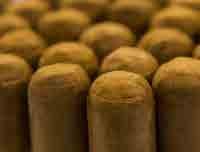
De igual forma podrá llevar hasta 3 botellas de licor y 200 cigarrillos, souvenirs o recuerdos de su estancia en el país.
In Cuban tourism facilities, including hotels and others of the kind, prices are set in Cuban pesos (CUP) and all credit cards are acceptable unless those issued by U.S. banks or their branches abroad.

Visitors entering the Island must have a valid updated passport as well as a visa or tourist card, except for nationals of countries holding visa exemptions treaties with Cuba. Tourism cards are issued by Cuban consular offices as well as travel agencies and airlines
As far as Cuban Customs, a tourist is understood as a non-permanent resident in the country, regardless of his nationality, entering the country for leisure, business and health or sports purposes for more than 24 hours and less than six months.
Tourists may import their personal belongings as a temporary admission duty free, to be reexported on leaving the country.
Bienvenidos MAYO 2023 MAY 74
DO NOT BRING WITH YOU OR AS ACCOMPANYING BAGGAGE:
Drugs or narcotics
Psychotropic or hallucinogen substances
Precursors
Explosives
Blood products
Obscene or pornographic literature, articles and objects or those considered as pernicious to the interests of the nation
TOURISTS MAY EXPORT:
Up to (20) units of twisted tobacco (cigars or snuffed) without proof of purchase and up to fifty (50) units of twisted tobacco as long as packed in their original containers, closed, sealed and exhibiting the official established hologram, otherwise said export is forbidden.
For any amount exceeding fifty (50) units of twisted tobacco and not exceeding 5,000 cuc, tourists must provide official sales invoice issued by any of the stores authorized to market Cuban twisted tobacco, corresponding to all the tobacco to be exported and packed in their original containers, closed, sealed and exhibiting the official established hologram. Amounts of twisted tobacco in excess of fifty (50) units not declared by the traveler or any other amount exceeding the one declared, or that even being declared for that matter, either its acquisition is not duly credited by an official sales invoice or packing containers do not meet the identification requirements of Cuban twisted tobacco, will be seized by Custom authorities.
Similarly, tourists may export up to three (3) liquor bottles and two hundred (200) cigarettes, souvenirs or mementos of their stay in the country.

Ocio y
en Cuba 75
Guía del
la Cultura
directorio DIRECTORY
transporte
TAXIS
Cubataxi

Tel: (53) 7855 5555
Sta Ana. Nuevo Vedado, Plaza de la Revolución.
Fenix S. A.
Tel: (53) 7866 6666
Compostela No. 254
Habana Vieja.
Coco taxis
Tel: (53) 7878 2444 y 7873 1411
Ayestarán No. 103. Cerro
OFICINAS DE RENTA DE AUTOS BOYEROS
Aeropuerto Internacional
José Martí Terminal No. 2
Tel: (53) 7649 5155
Ave. Van Troy y Final.
Aeropuerto Internacional
José Martí Terminal No. 3
Tel: (53) 7649 5130
Ave. Van Troy e/ Final y Carretera Aeropuerto.
PLAYA
Hotel Comodoro
Tel: (53) 7204 1706
3ra y 84, Miramar.
Hotel Copacana
Tel: (53) 7204 0621
1ra. No. 4404 e/ 44 y 46, Miramar.
Hotel Meliá Habana
Tel: (53) 7204 3236
3ra e/ 76 y 80, Miramar.
Dos Gardenia
Tel: (53) 7204 3635
Ave. 7ma. esq. 26, Miramar.
Memories Montehabana
Tel: (53) 72144132
Calle 70 y 5ta B, Miramar.
Four Points by Sheraton
Tel: (53) 7214 1470
Calle 5ta A y 78, Miramar.
Punto 47
Tel: (53) 7207 9055
Calle 47 e/ 36 y 41, Kohly.
Bienvenidos
Hotel El Bosque
Tel: (53) 7204 3429
Ave. 49-C esq. a 28, Kohly.
Hotel Kohly
Tel: (53) 7204 3429
Ave. 49 esq. a 36 A, Kohly.
Hotel H10 Habana
Panorama
Tel: (53) 7204 1699
1ra esq. a 7ma, Miramar.
Hotel Memories Miramar
Tel: (53) 72046453
5ta Ave. e/ 70 y 72, Miramar.
PLAZA DE LA REVOLUCIÓN
Oficina Capri
Tel: (53 7) 7836 9797
Calle 21, e/ N y O, Vedado.
Edificio FOCSA
Tel: (53) 78309288
Calle L e/ 17 y19, Vedado.
Hotel Tryp Habana Libre

Tel: (53) 78384954
Calle L e/ 23 y 25, Vedado.
1ra. y B
Tel: (53) 7833 0387
1ra esq. a B, Vedado.
HABANA VIEJA
Hotel Inglaterra
Tel: (53 7) 7866 6218
Prado y San Rafael.
Terminal de Cruceros
Tel: (53) 7866 0284
Ave. del Puerto.
Hotel Sevilla
Tel: (53) 7863 2271
Prado e/ Trocadero y Ánimas, Habana Vieja.
Hotel Saratoga
Tel: (53) 7864 7715
Prado esq. a Dragones.
AUSA
Tel: (53) 7866 n9316
Desamparados No. 166 e/ Habana y Compostela.
OMNIBUS INTERPROVINCIALES
Terminal Vía Azul
Tel: (53) 7881 4131, 7881 1108 y 7881 5657 Ave 26 y Ave. Zoológico, Plaza de la Revolución.
Terminal Ómnibus
Nacionales
Tel: (53) 7870 9641 Ave. Boyeros y 19 de mayo. Plaza de la Revolución.
HABANA BUSTOUR RUTAS Y PARADAS

T1. Alameda de PaulaPlaza de la Revolución José Martí (ruta principal) Distancia: 23 Kilómetros viaje en redondo.
Paradas:
• Castillo de la Real Fuerza
• Hotel Sevilla
• Parque Central
• Hotel Presidente
• Plaza de la Revolución
• Museo Napoleónico y Universidad de La Habana
• Hotel Habana Libre
• Casa de las Américas y Ministerio de Relaciones Exteriores
• Prado y San Lázaro
• Capitolio Nacional Restaurante Floridita
• Bar Cabaña
• Edificio de la Marina
• Alameda de Paula.
GASOLINERAS
Tangana
Malecón y 13, Vedado
L y 17
L y 17, Vedado
17 y 12
12 esq. a 17, Vedado
Riviera
Paseo y Malecón, Vedado
Ayestarán
Ayestarán y Ave. de Rancho Boyeros, Cerro
El Túnel
Calle 2 y Ave. 31, Miramar
31 y 18
Ave. 31 y 18, Playa
Santa Catalina
Santa Catalina y Vento, Cerro
T2. Marina HemingwayPlaza de la Revolución
José Martí (ruta secundaria) Distancia: 40 kilómetros viaje en redondo.
Paradas:
• Restaurante La Ferminia
• Centro Comercial Náutico
• Restaurante La Cecilia
• Miramar Trade Center
• Acuarium Nacional
• 1ra y 28 Maqueta de La Habana
• 1ra y 18 Restaurante Don Cangrejo
• Clínica Internacional Cira García
• Calle 23 y Ave 47 oeste del puente sobre el Río Almendares
• Cementerio de Colón
• Plaza de la Revolución
En el retorno a la Marina
Hemingway se realizan las mismas paradas.
MAYO 2023 MAY 76
líneas aéreas agencias de viajes
Aerocaribbean, S.A.
Calle 23 No. 64, Vedado. Plaza de la Revolución.
Tel: (53) 7879 7524
Aeroflot
Ave. 5ta. y 76. Edificio
Barcelona. Miramar Trade Center. Playa.
Tel: (53) 7204 3200
Aeropostal
Hotel Habana Libre Tryp
L y 23 Vedado. Plaza de la Revolución
Tel: (53) 7833 3296
Aerotaxi
Calle 27 No. 102 e/ M y N, Vedado. Plaza de la Revolución
Tel: (53) 7836 4064
Air Europa
Ave. 5ta. y 78, Edificio Santiago. Miramar Trade Center. Playa.
Tel: (53) 7204 6904
Air France
Calle 23 No. 64 esq. a Infanta, Vedado. Plaza de la Revolución.
Tel: (53) 7833 2642
Air Jamaica
Hotel Habana Libre Tryp.
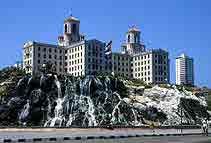
Plaza de la Revolución.
Tel: (53) 7833 2447
Fax: (53) 766 2449
L y 23 Vedado.
ALM, Compañía Antillana de Aviación
Calle 23 esq. a E, Vedado. Plaza de la Revolución.
Tel: (53) 7833 3729
Avianca Sam
Hotel Nacional de Cuba, Mezzanine. Plaza de la Revolución.
Tel: (53) 7833 4700
Copa Airlines
Calle 23 No. 64, interior, Vedado. Plaza de la Revolución.
Tel:(53) 7204 1111
Grupo TACAl
L y 23 Vedado. Hotel Habana
Libre Tryp. Plaza de la Revolución.
Tel: (53) 7833 2447
Mexicana de Aviación
Calle 23 No. 64, Vedado.
Plaza de la Revolución.
Tel: (53) 7833 3532
CUBANACÁN
Casa Matriz
Ave 17A No. 71. e/ 174 y 190 Tel: (53) 7208 9920
Buró de Turismo
Hotel Tropicoco
Ave. Banderas y Las Terrazas. Mar Azul, Playas del Este
Tel: (53) 7796 0253
Sucursal Eventos e Incentivos
Ave 17A No. 73. e/ 174 y 190, Playa
Tel: (53) 7204 4757
Sucursal de Ventas Internacional
Calle 68 e/ 5ta y 5ta A. Playa
Tel: (53) 7206 9590
Cubanacán Viajes Sucursal Habana

Calle 68 No 503 e/ 5ta y 5ta A. La Habana. Teléfono(s) (53 7) 2041658
Sucursal Varadero
Calle 24 y Playa.
Tel: (53) 4566 7061
CUBATUR
Casa Matríz
Calle 15 No. 410 e/ F y G. Plaza de la Revolución.
Tel: (53) 7835 2902 / 7835
3790
Cubatur La Habana
Opcionales
Calle 23 esq. a L, Vedado
Tel: (53 7833 3569 / 7834
4135
GAVIOTA
Oficina Central
HAVANATUR
Casa Matríz
Calle 3ra, esquina a 74. Miramar.
Tel: (53) 7201 9752
Celimar
Ave. Paseo No. 606, e/ 25 y 27, Vedado.
Tel: (53) 7836 3100
Multidestinos
Calle 3ra esq. a 74, Miramar.
Tel: (53) 7204 7417
Havanatur Tour & Travel
Calle 3ra., esquina a 74, Miramar.
Tel: (53) 7204 7417
Havanatur Tour & Travel
La Habana Opcionales
Calle Paseo # 606 e/ 25 y 27, Vedado
Tel: (53) 7836 3100
Havanatur Viajes Express
Calle 6 No.117 e/ 1ra y 3ra, Miramar, Playa
Tel: (53) 72049057 / 7204
1974-75 / 7204 9057 ext. 128

PARADISO
Oficina Central
Calle 23 e/ P, Vedado.
Tel: (53) 7836 5380
Sucursal La Habana
Calle 19 No. 560 esq. a C, Vedado.
Tel: (53) 7832 9538 y 39
OTRAS AGENCIAS DE VIAJES
SAN CRISTÓBAL
Distancia: 65 kilómetros
Paradas:
• Salida del Túnel hacia Playas del Este
• Hospital Naval

• Villa Panamericana
• Alamar
• Villa Bacuranao
• Taramar, frente a la Marina Tarará
• Villa Mégano
• Hotel Tropicoco
• Hotel Blau Arenal
En el retorno al Parque
Central se realizan las mismas paradas.
Ave 47 No.2833 e/ 28 y 34, Rpto. Kohly, Playa
Tel: (53) 7204 7526 / 7207
9481
Gaviota Tours La Habana
Ave 49 No. 3620 e/ 36 y 36ª, Rpto Kohly.
Tel: (53) 7206 9545 / 7204
7683, Ext. 103 y 108
Calle Oficios 110 e/ Lamparilla y Amargura. Habana Vieja.
Tel: (53) 7861 9171
SOL Y SON LOS VIAJES
Calle 23 No 64 esq. P. Vedado
Tel: (53) 7833 0294
AMISTUR
Calle Paseo No. 406 e/ 17. Vedado.
Tel: (53) 7833 2374
CUBAMAR
Calle 3ra e/ 12 y Malecón, Vedado, Plaza de la Revolución
Tel: (53) 7830 1220
T3. Parque Central - Playa de Santa María del Mar (ruta secundaria por las playas del Este de la Habana)
viaje redondo.
104 URGENCIA MÉDICA 106 PNR Policia Nacional Revolucionaria Guía del Ocio y la Cultura en Cuba 77
CAJEROS AUTOMATICOS
CENTRO HABANA
Aguila esq. a Dragones
San Rafael esq. a Industria
Belascoaín esq. a Zanja
Belascoaín e/ San José y San
Rafael
Galiano esq. a San José
Infanta e/ Valle y San José
Centro Comercial Carlos III
Neptuno e/ Rayos y Manrique
HABANA VIEJA
Amargura esq. a Mercedes
Obispo e/ Aguiar y Cuba
Obispo e/ Aguacate y Villegas
O’ Reilly esq. a Compostela
Prado e/ Ánimas y Virtudes
San Pedro y Luz, Belén
Empedrado esq. a Aguiar
Puntos de conexión WIFI

Centro Habana
Parque Galiano y San Rafael
Parque Trillo
Malecón. zona Hotel
Deauville
Malecón. Exterior
Restaurante Castro Poll
Parque Infanta y Salud
Parque Karl Marx
Boulevard de San Rafael
Parque Ángeles y Estrella
Habana Vieja
Plaza Cristo
Playa
Centro Multiservicios Miramar
Parque Coyula
Parque 13 y 76
Balneario Universitario
Recinto Ferial Pabexpo
Palacio de las Convenciones
Teatro Karl Marx
Laboratorio KCHO
Parque Flores
Parque Genética
Parque Juan Manuel Márquez
Parque Náutico
Parque Rincón Martiano
Parque Lázaro Cárdenas
Kolhy
PLAZA DE LA REVOLUCIÓN
Almendares esq. Desagüe
Ave 26 esq. a 51
17 e/ M y N, FOCSA
Ave 23 e/ M. Sánchez y 6
Ave 23 esq. a J
Ave 23 e/ P y Malecón
La Rampa
Línea esq. a M
Loma y Tulipán
Marino e/ Conill y Santa Ana
Tulipán e/ Marino y Estancia
Universidad No. 64, e/ G y J, Parqueo Hospital Calixto
García
PLAYA
5ta y 2 Kasalta
5ta e/188 y 214
Club Habana 5ta esq. 112
Ave 84 y 3ra
Hotel Comodoro 3ra y 78
Miramar Trade Center 3ra y 78
Oficina Central BPA Ave 17, No. 8215, entre 82 y 84
CIMEX 1ra No. 40, e/ O y 2 Ave 23, esq. 3ra A, Jaimanitas
Centro Comercial La Puntilla, 3ra y Final, Centro Comercial la Copa Ave 42 esq. a 1ra
Hotel LTI Panorama 70 y 1ra
SEPSA Ave 9, esq. a 26 Centro Comercial 5ta y 42 Náutico y 1ra, Circulo Social José Ramón Rodríguez Ave 42 esq. a 31
CASAS DE CAMBIO (CADECA) PLAZA DE LA REVOLUCIÓN
Línea e/ Paseo y A
Edificio FOCSA, 17 y M
Coppelia, 23 y L
CENTRO HABANA
Belascoain e/ Zanja y Salud
Neptuno e/ Consulado e Industria
HABANA VIEJA
Obispo e/ Aguiar y cuba
Obrapía esq. a Compostela
CERRO
San Julio esq. San Anselmo
PLAYA
Centro Comercial 5ta y 42
5ta A y 42, Miramar
Parque Jaimanitas
Parque Japonés
Plaza de la Revolución
La Rampa
Parque Línea y L
Parque Wilfredo Lam
La Piragua
El Castillito
Centro Tecnológico Hola Ola
Malecón (Paseo, Ave Presidentes, Calle 23, Exterior
Centro Hispano Americano, Zona Abadía)
Parque Línea y H
Parque Abel Santa María
Parque Clandestinidad
Casa de Las Américas
TELEFONIA PÚBLICA
Llamadas al extranjero
Si usted desea realizar una llamada al extranjero debe marcar el 119 (Salida de Cuba), seguidamente el prefijo del país y finalmente el número deseado.
Llamar a Cuba
Para realizar una llamada a Cuba, usted debe marcar el número de salida del país, seguidamente el 53 (Código de entrada a


Cuba), a continuación el prefijo correspondiente a la localidad y finalmente el número deseado.
Llamadas a Provincias
Si usted ha llegado a Cuba y tiene la necesidad de comunicarse con alguna provincia del país, deberá macar el 0 y seguidamente el código de la localidad a la que llama y finalmente el numero deseado.
Prefijos Telefónicos
Pinar del Rio: 48
La Habana: 7
Artemisa: 47
Mayabeque: 47
Matanzas: 45
Cienfuegos: 43
Villa Clara: 42
Sancti Spíritus: 41
Ciego de Ávila: 33
Bienvenidos MAYO 2023 MAY 78
LA HABANA
5TA Y 16
5ta Ave. y Calle 16. Playa
Telf.: (+53) 7214 4737
HOTEL MELIÁ HABANA
Avenida 3ra e/ 76 y 80. Playa
Telf.: (+53) 7204 8500
HOTEL MELIÁ COHIBA
1ra y 3ra. Vedado
Telf.: (+53) 7833 3636
HOTEL NACIONAL
Calle 21 y O. Vedado
Telf.: (+53) 7836 3564
FÁBRICA PARTAGÁS
Calle Industria No.520
Habana Vieja
Telf.: (+53) 7862 3772
HOTEL PALCO
Calle 11 y 146, Cubanacan.
Playa
Telf.: (+53) 7204 7235
CLUB HABANA
5ta Ave. y 188 a 192. Playa
Telf.: (+53) 7204 5700
HOSTAL CONDE VILLANUEVA
Calle Mercaderes Esq.
Amargura. Habana Vieja
Telf.: (+53) 7801 2293
HOTEL HABANA LIBRE
L e/ 23 y 25, Vedado
Telf.: (+53) 7834 6111
HOLGUÍN
HOTEL VILLA TUREY
GUARDALAVACA
Zona Residencial, Playa Guardalavaca. Holguín
Telf.: (+53) 2443 0431
VARADERO
1RA Y 63
1ra Ave y calle 63.
Telf.: (+53) 4566 7843
1RA y 39
Calle 39 y 1ra Ave.
Telf.: (+53) 4561 4719
GALERÍA COMERCIAL LAS AMéRICAS
Centro de Convenciones
Plaza América, Autopista
Oeste Km 6, Varadero
Telf.: (+53) 4566 8181
CIEGO DE ÁVILA
LA ESTRELLA
Pueblo La Estrella, Cayo
Santa María. Cayería Norte, Ciego de Ávila
Telf.: (+53) 4235 0135
CAYO COCO
Hotel Blau Colonial, Cayo Coco. Ciego de Ávila
Telf.: (+53) 3330 1321
CAYO GUILLERMO
Hotel Meliá Cayo Guillermo. Ciego de Ávila
Telf.: (+53) 3330 1632
CIENFUEGOS
Avenida 54, e/33 y 35. Cienfuegos
Telf.: (+53) 4355 2144
SANTIAGO DE CUBA
MELIÁ SANTIAGO DE CUBA
Hotel Meliá Santiago. Calle M e/4ta y Av. de las Américas. Santiago de Cuba.
Telf.: (+53) 2264 7168
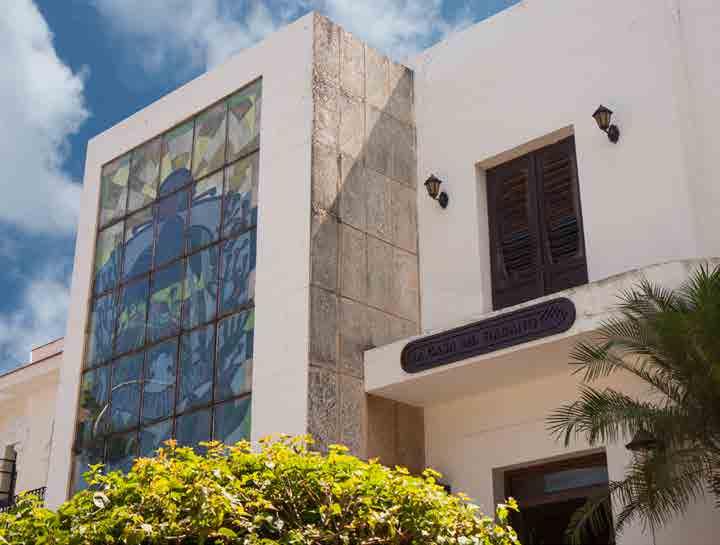
museos MUSEUMS
GABINETE DE ARQUEOLOGÍA
calle Tacón # 12 entre O’Reilly y Empedrado, Habana Vieja
Teléf.: (53) 7 8614469
MUSEO DE LA DANZA
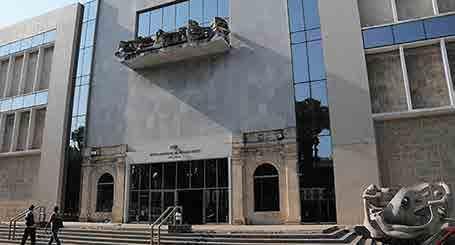
calle Línea y G, El Vedado, La Habana
MUSEO NUMISMÁTICO
calle Obispo entre Habana y Aguiar, Habana Vieja
Teléf.: (53) 7 8615811
MUSEO DEL TABACO

calle Mercaderes Nº 120, Habana Vieja
Teléf.: (53) 7 8615795
MUSEO NACIONAL DE BELLAS ARTES
La Habana
Teléf: (53) 7 8632657
MUSEO DE LA REVOLUCIÓN
Avda Bélgica, La Habana
Teléf.: (53) 7 8601524
MUSEO DEL RON HAVANA CLUB
Avda. del Puerto 262, esq. Sol, Habana vieja, La Habana.
Teléf.: 53 (7) 861 8051 / 862 4108
MUSEO NAPOLEÓNICO
Plaza de la Revolucion, La Habana
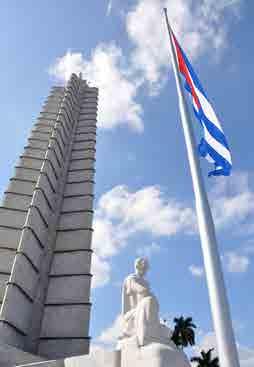
MUSEO NACIONAL DE ARTES DECORATIVAS
Calle 17, no 502 | e/ D y E, Vedado, La Habana
CASA MUSEO ERNEST HEMINGWAY

Finca Vigía, San Francisco de Paula, La Habana
MEMORIAL JOSé MARTÍ
Avda. Paseo y Avda. Independencia, Plaza de La Revolución
MUSEO DEL AUTOMÓVIL

Calle Oficios Nº 12, La Habana
Teléf: (53) 7 8639942
Museo Nacional de Bellas Artes
Museo del Tabaco
Casa Museo Ernest Hemingway
Memorial José Martí
Bienvenidos MAYO 2023 MAY 80
Museo del Automóvil
teatro, espectáculos, música
THEATERS, SHOWS, MUSIC
GRAN TEATRO DE LA HABANA ALICIA ALONSO
calle Prado # 458 entre San Rafael y San José, Habana Vieja
Teléf.: (53) 7 861 3076
TEATRO NACIONAL DE CUBA

Paseo y 39, Plaza de la Revolución
Teléf: (53) 7 878 5590
TEATRO KARL MARX
Avda 1era. y 10, Miramar, Playa.
Teléf: (53) 7 2091991
TEATRO HUBERT DE BLANCK
Calzada No. 657, entre A y B, Vedado, La Habana
Teléf: (53) 7 830 1011
Bares y Clubs
LA ZORRA Y EL CUERVO
Avda 23 entre N y O, Vedado, La Habana
Teléf.: (53) 7 662402
EL GATO TUERTO
Calle O nº 14, entre l 17 y 19, Vedado, La Habana
Teléf: (537) 838 2696
Cabarets
CABARET TROPICANA
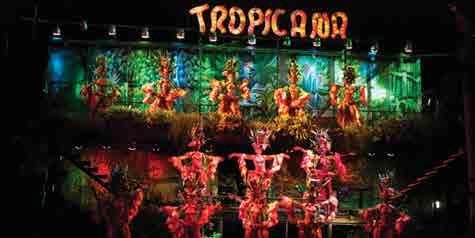
Dirección:72 A, Playa, La Habana
Teléfono: (53) 7 2671717
CABARET PARISIEN
Calle 21 y O Hotel Nacional, Vedado, La Habana
BUENA VISTA SOCIAL CLUB
calle Zulueta 660 entre Apodaca y Gloria, La Habana
SLOPPY JOE’S
calle Animas y Agramonte, Habana
Vieja, La Habana
HAVANA CAFé
Hotel Melia Cohiba, Ave. Paseo 1ra y 3ra - Vedado, La Habana.
JAZZ CAFé
Centro Comercial Galerías Paseo 3era. Planta
Avda. Paseo y 3, Vedado, La Habana
CAFé O’REILLY
Calle O’Reilly 203, esquina Calle San Ignacio | la Habana Vieja, La Habana
CAFé PARÍS
calle Obispo esquina San Ignacio
La Habana Vieja, La Habana,
CASA DE LA MÚSICA DE MIRAMAR
Avda.. 20 Nº 3308 esquina 35, Miramar, La Habana
Teléf.: (53) 7 204-0447 /
(53) 7 202-6147
CASA DE LA MÚSICA HABANA
calle Galiano entre Concordia y Neptuno
PIANO BAR TUN TUN
Avda. 35 esquina 20, Miramar, Playa, La Habana
Teléf.: (53) 7204-0447 /
(53) 7202-6147
CAFé CANTANTE MI HABANA
Avda. Paseo y 39 Teatro Nacional, Plaza de la Revolución, La Habana
Teléf.: (53) 7878-4275
DELIRIO HABANERO
Avda. Paseo y 39 Teatro Nacional, Plaza de la Revolución, La Habana
Gran Teatro de La Habana
Cabaret Tropicana
Guía del Ocio y la Cultura en Cuba 81

































































 Remedios y sus coloridas parrandas
Remedios y sus coloridas parrandas















 Una mirada atenta al futuro «La gestión patrimonial en Cuba»
Una mirada atenta al futuro «La gestión patrimonial en Cuba»






 * Pintura/Paint: son Cubano. Álvaro reja
* Pintura/Paint: son Cubano. Álvaro reja

















 GRAN TEATRO DE LA HABANA ALICIA ALONSO «ARQUITECTURA, HISTORIA Y VIDA CULTURAL»
GRAN TEATRO DE LA HABANA ALICIA ALONSO «ARQUITECTURA, HISTORIA Y VIDA CULTURAL»











 Romerías de Mayo «creación, cultura y juventudes»
Romerías de Mayo «creación, cultura y juventudes»






















